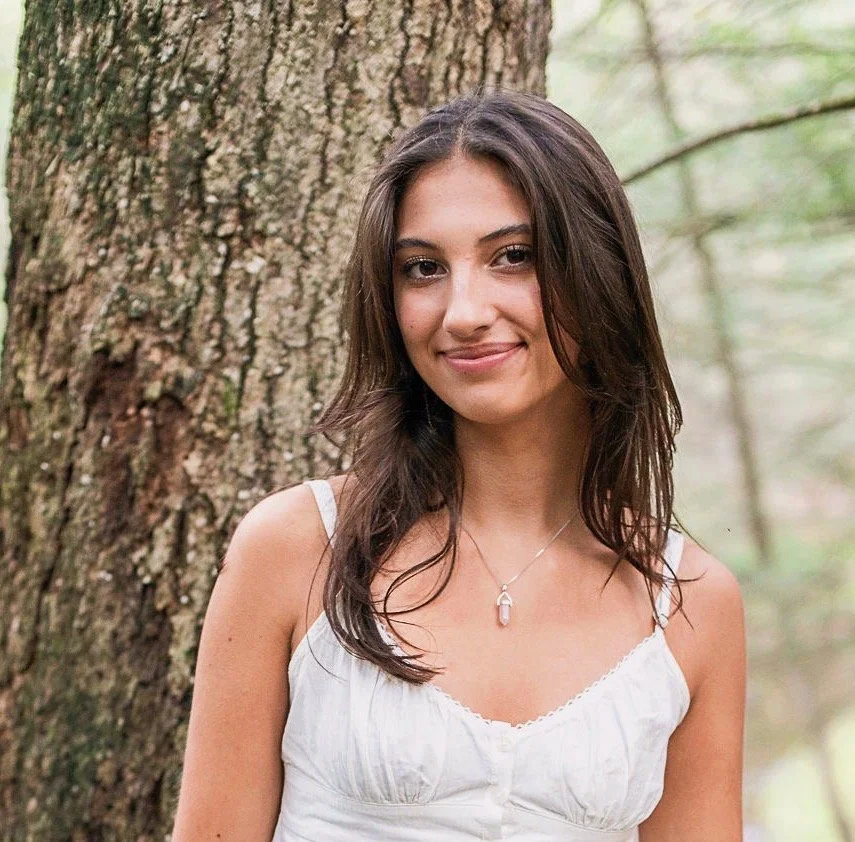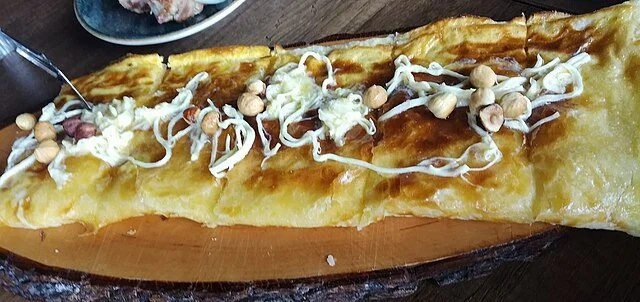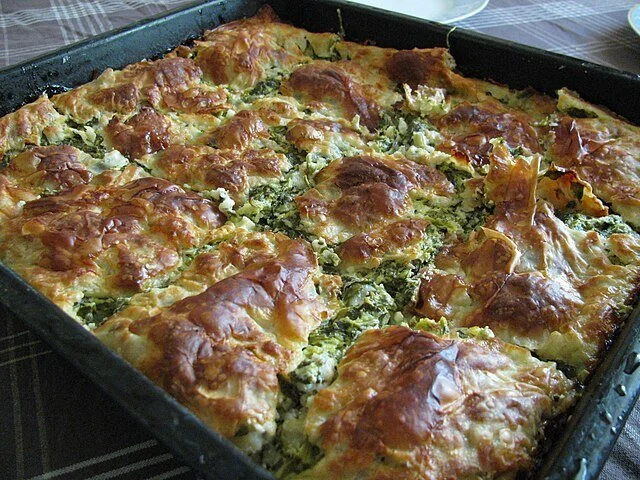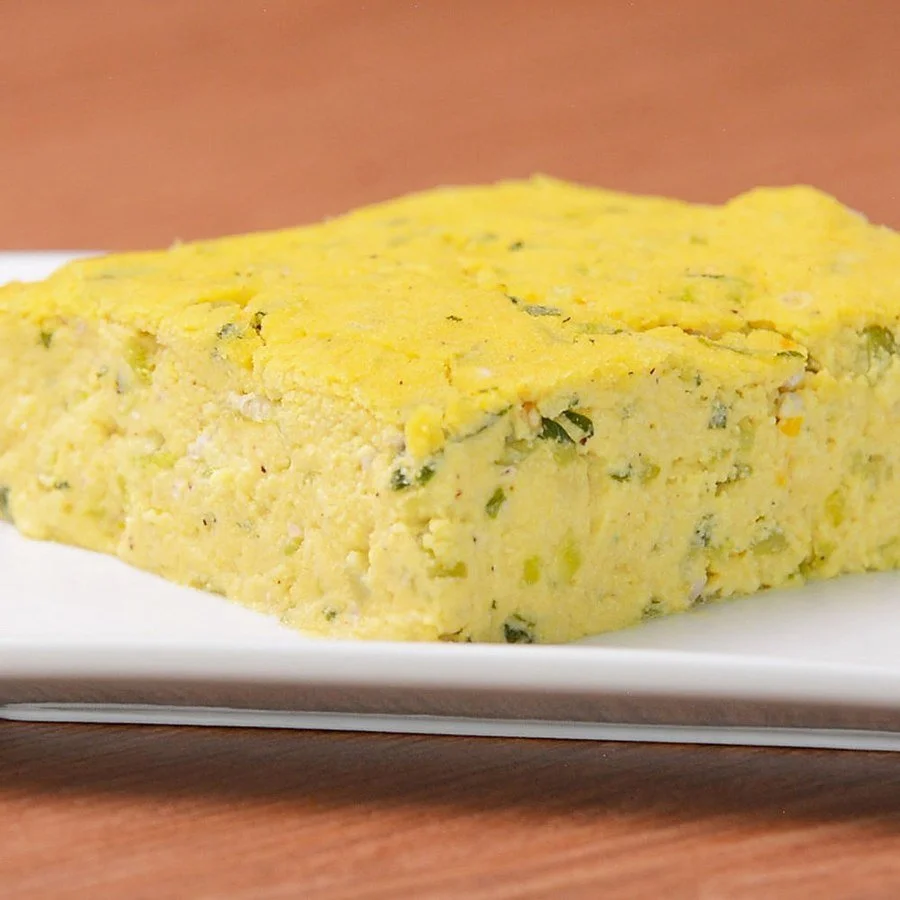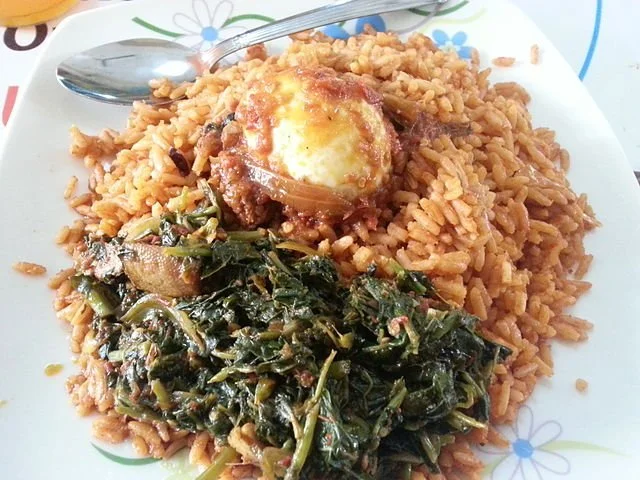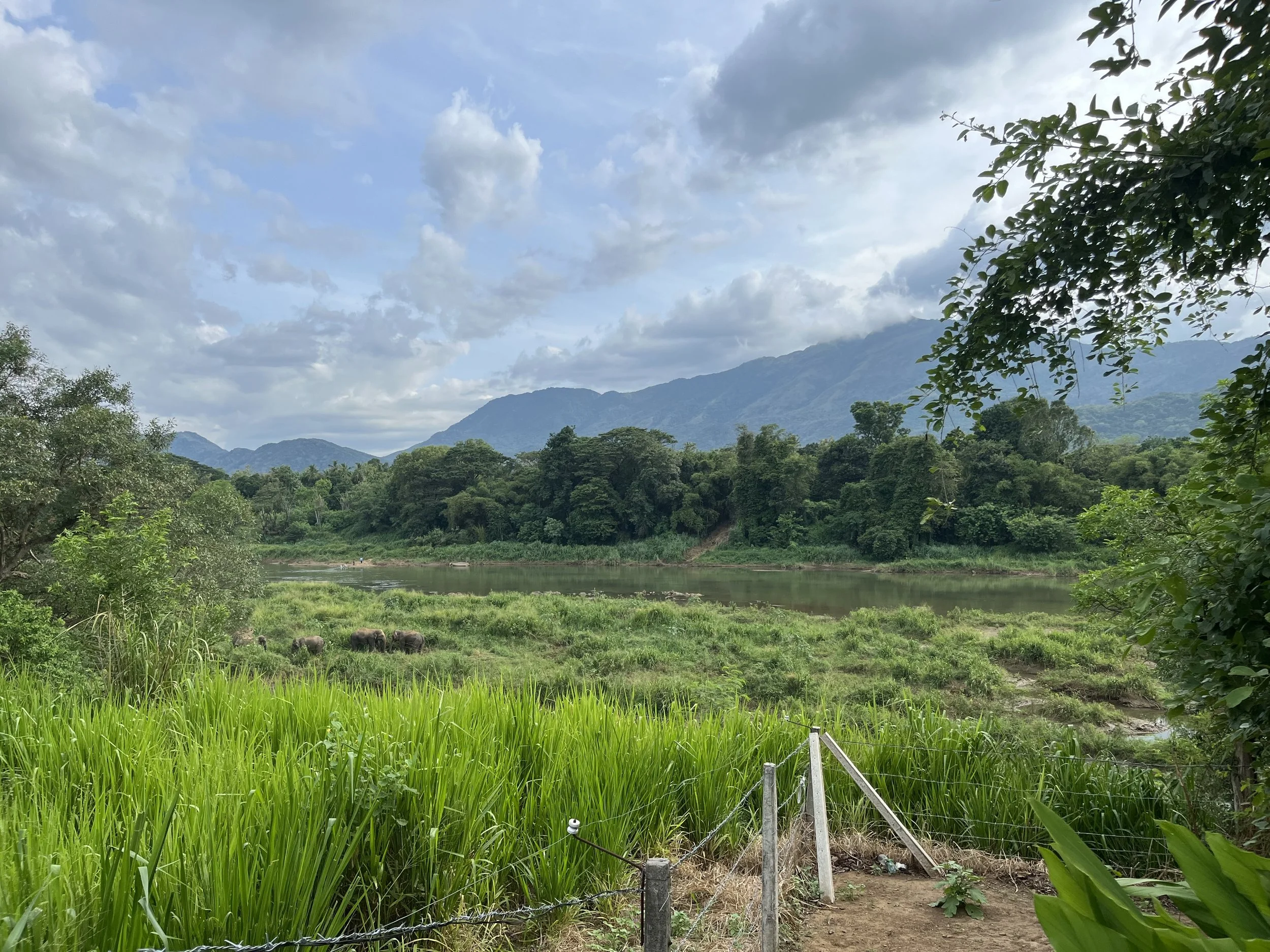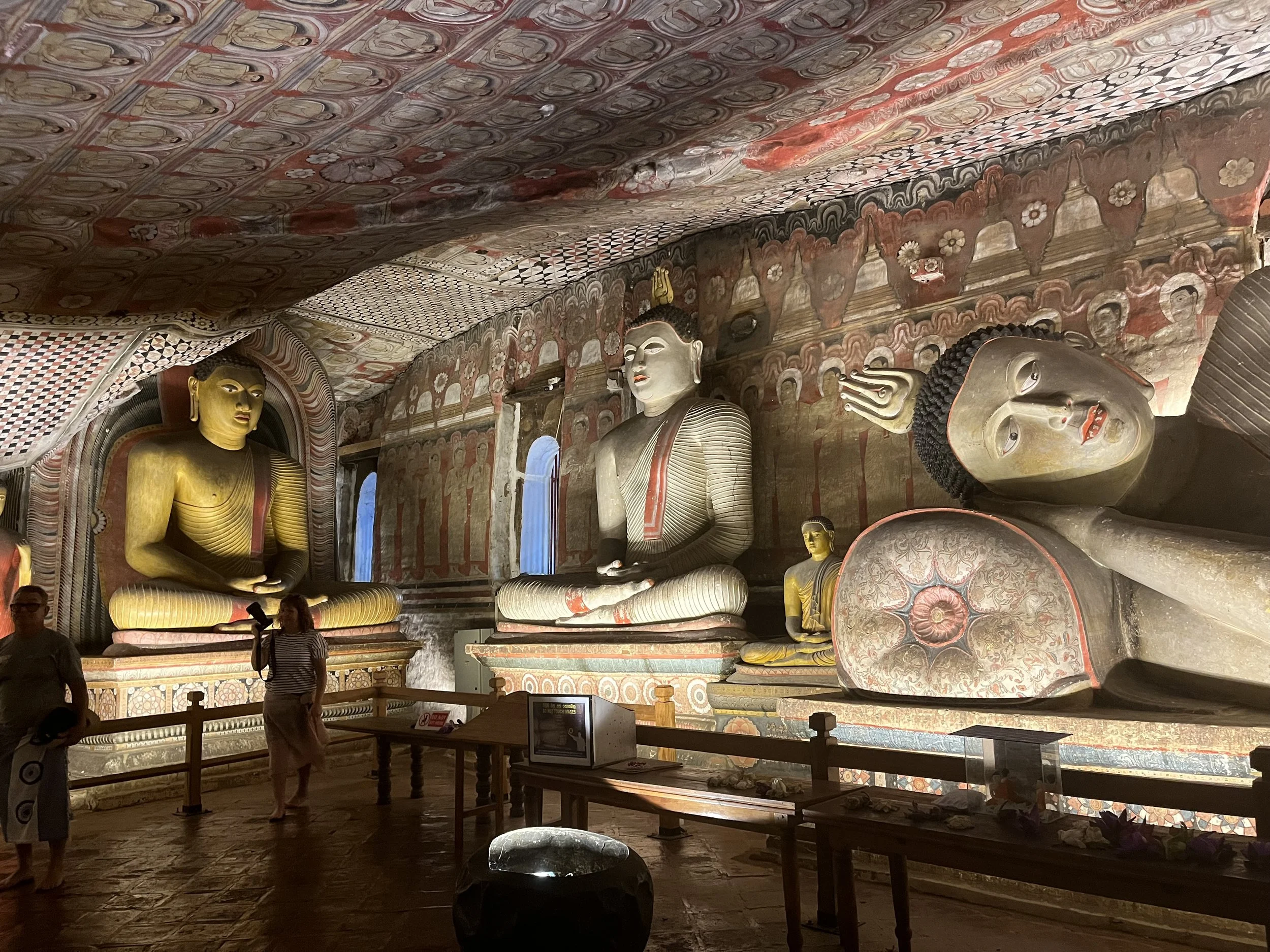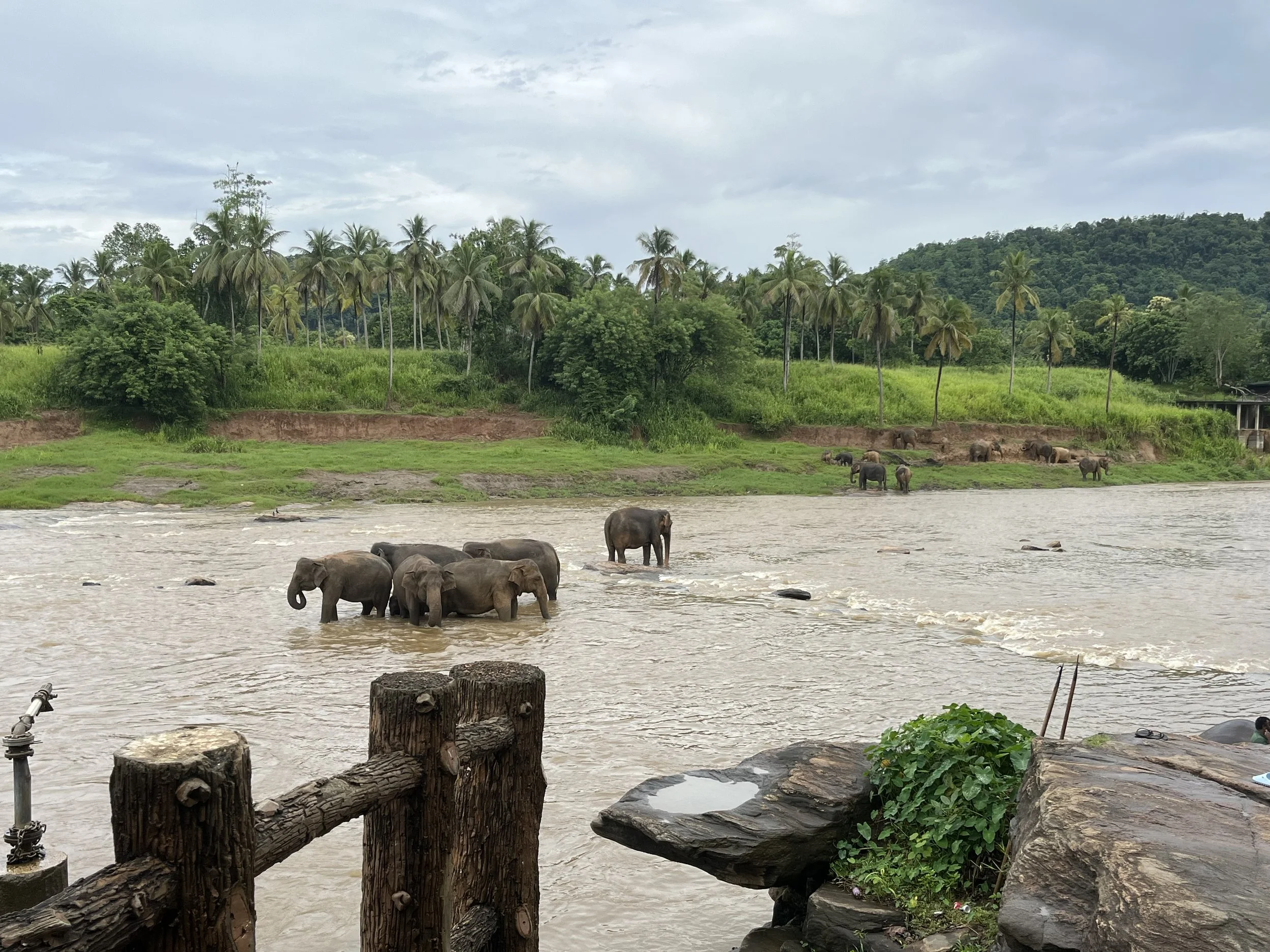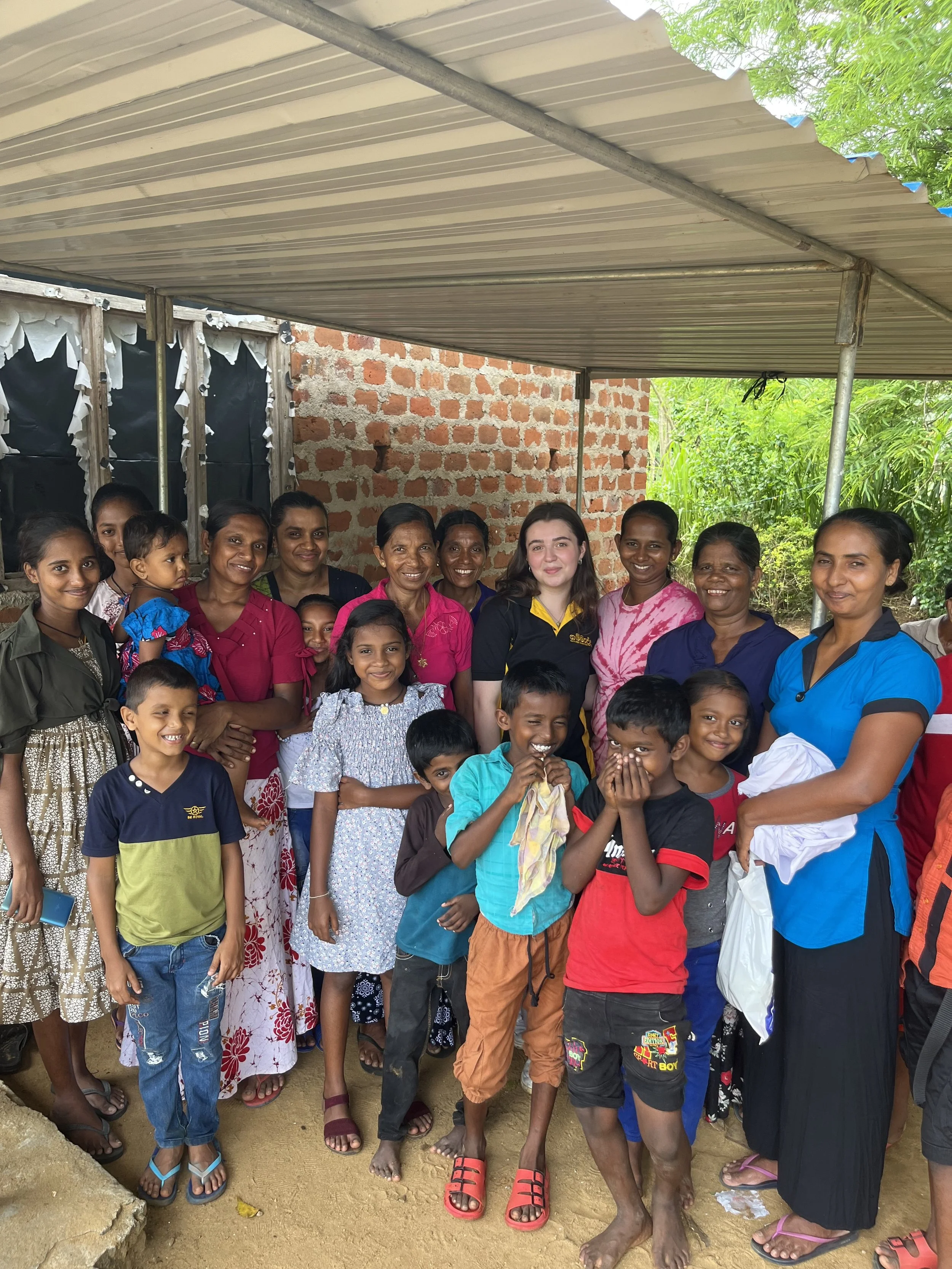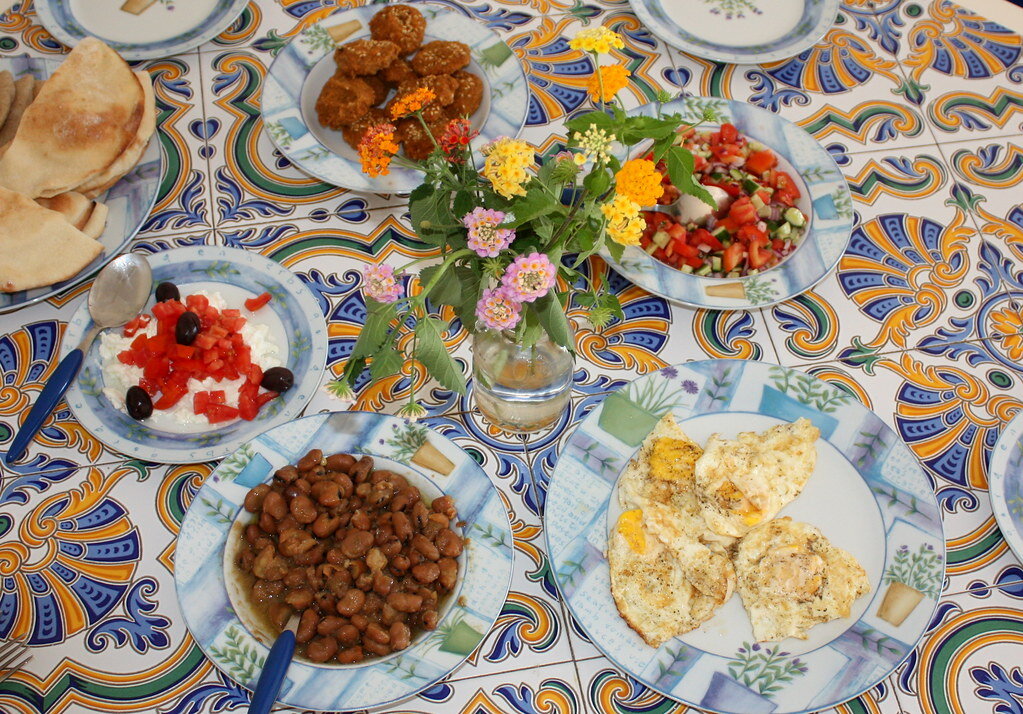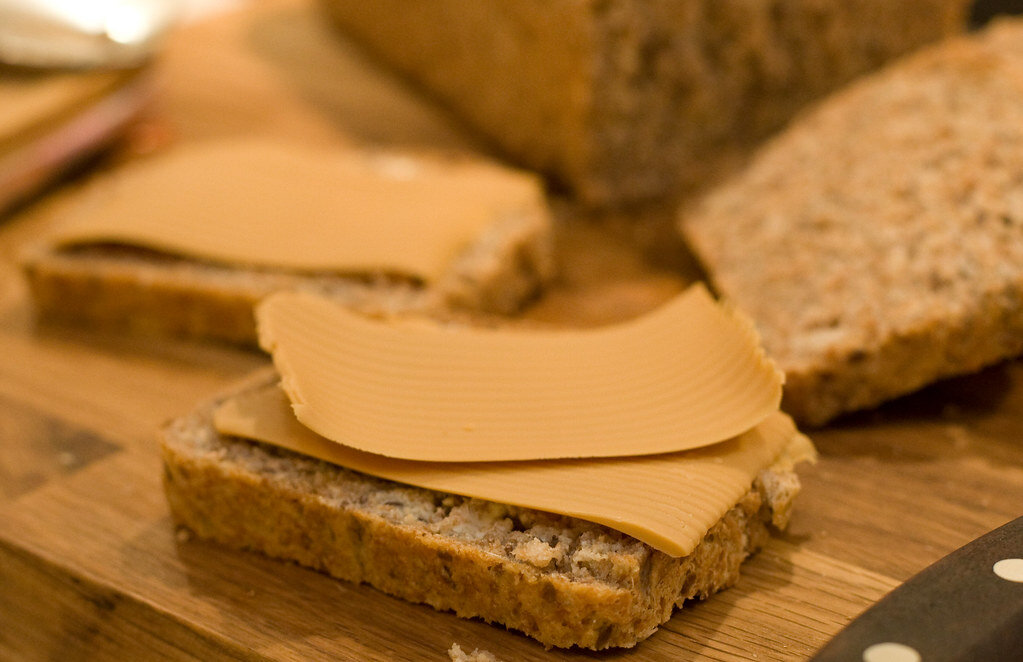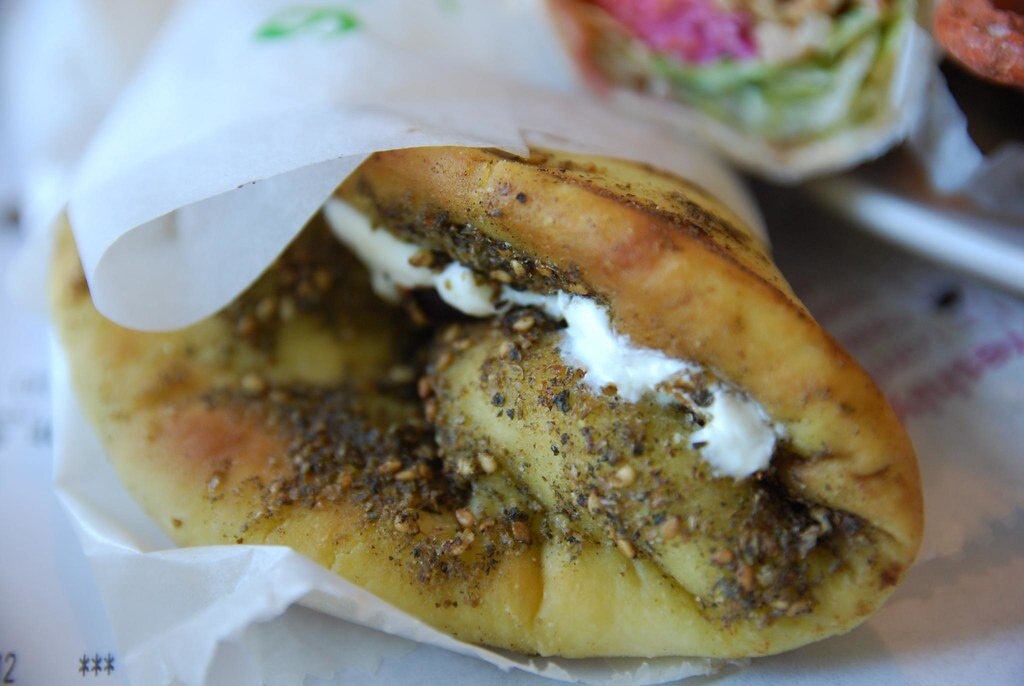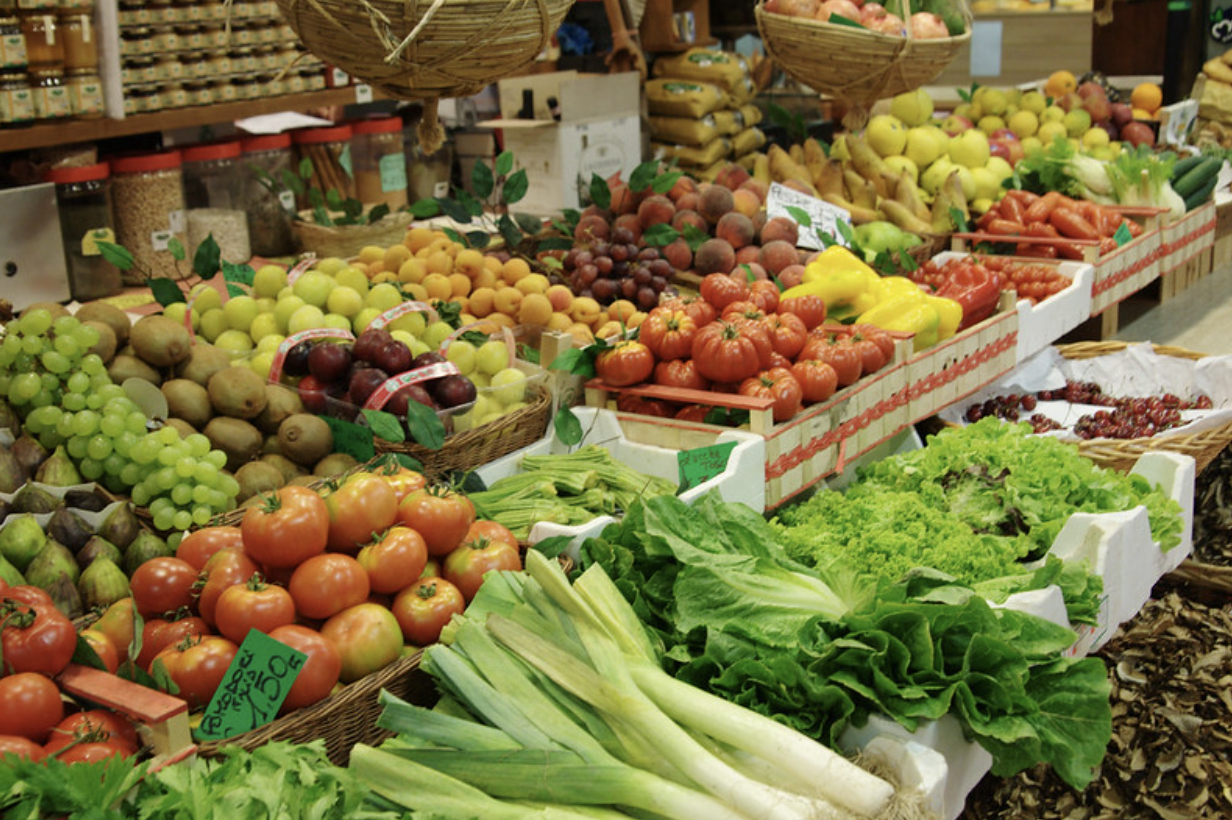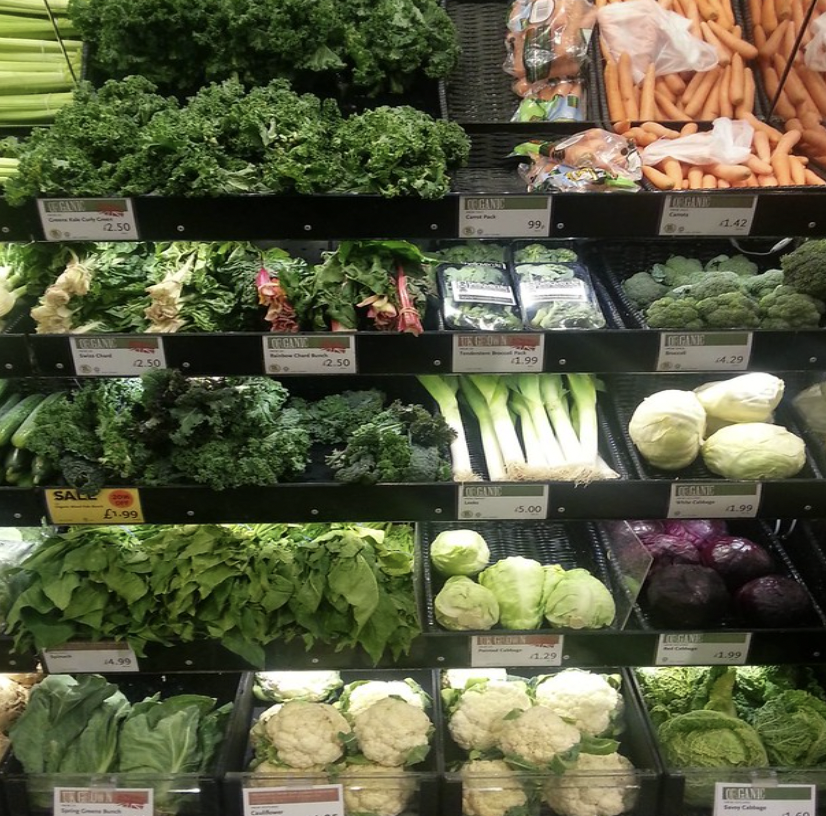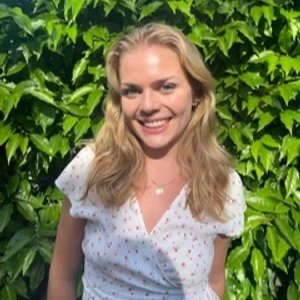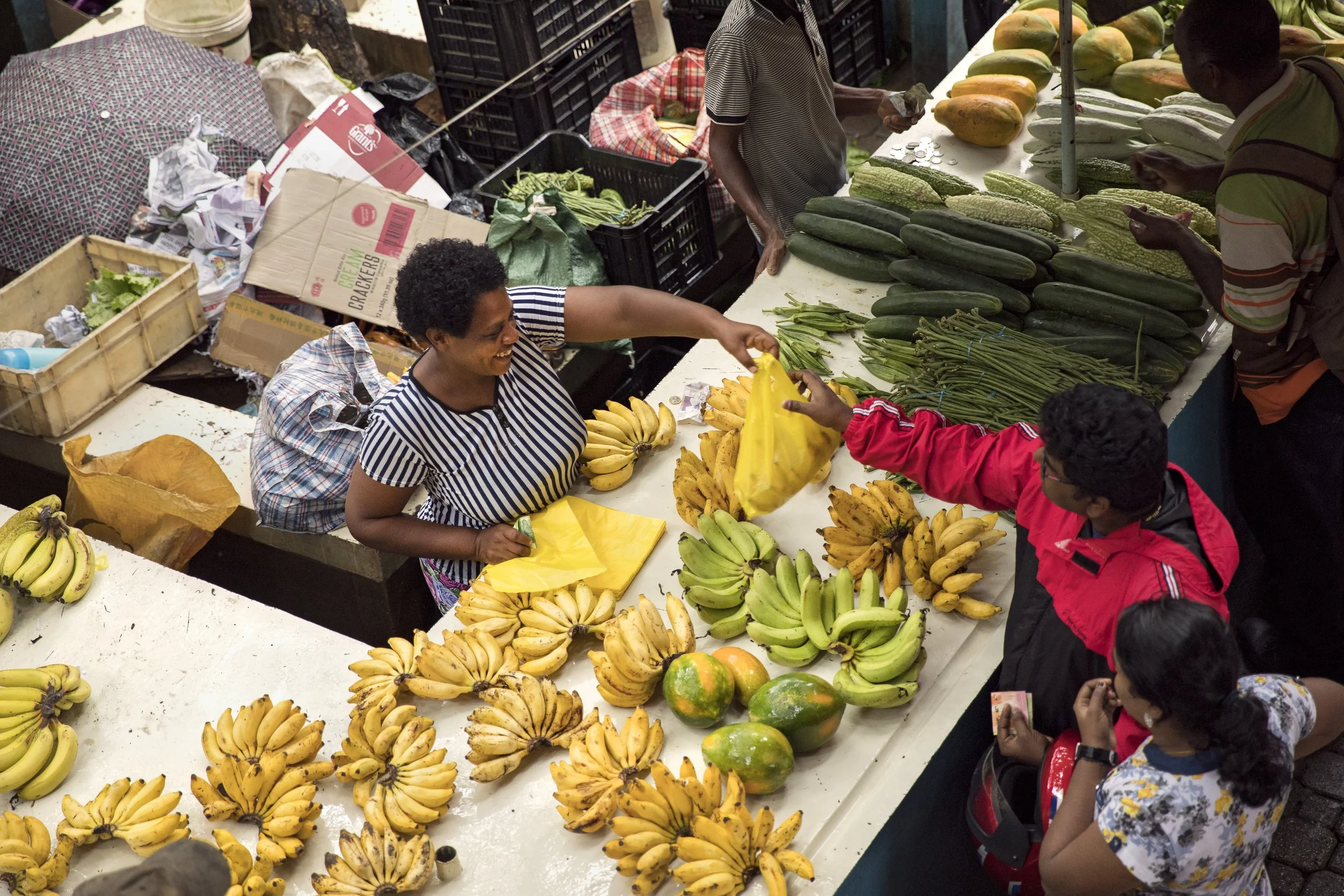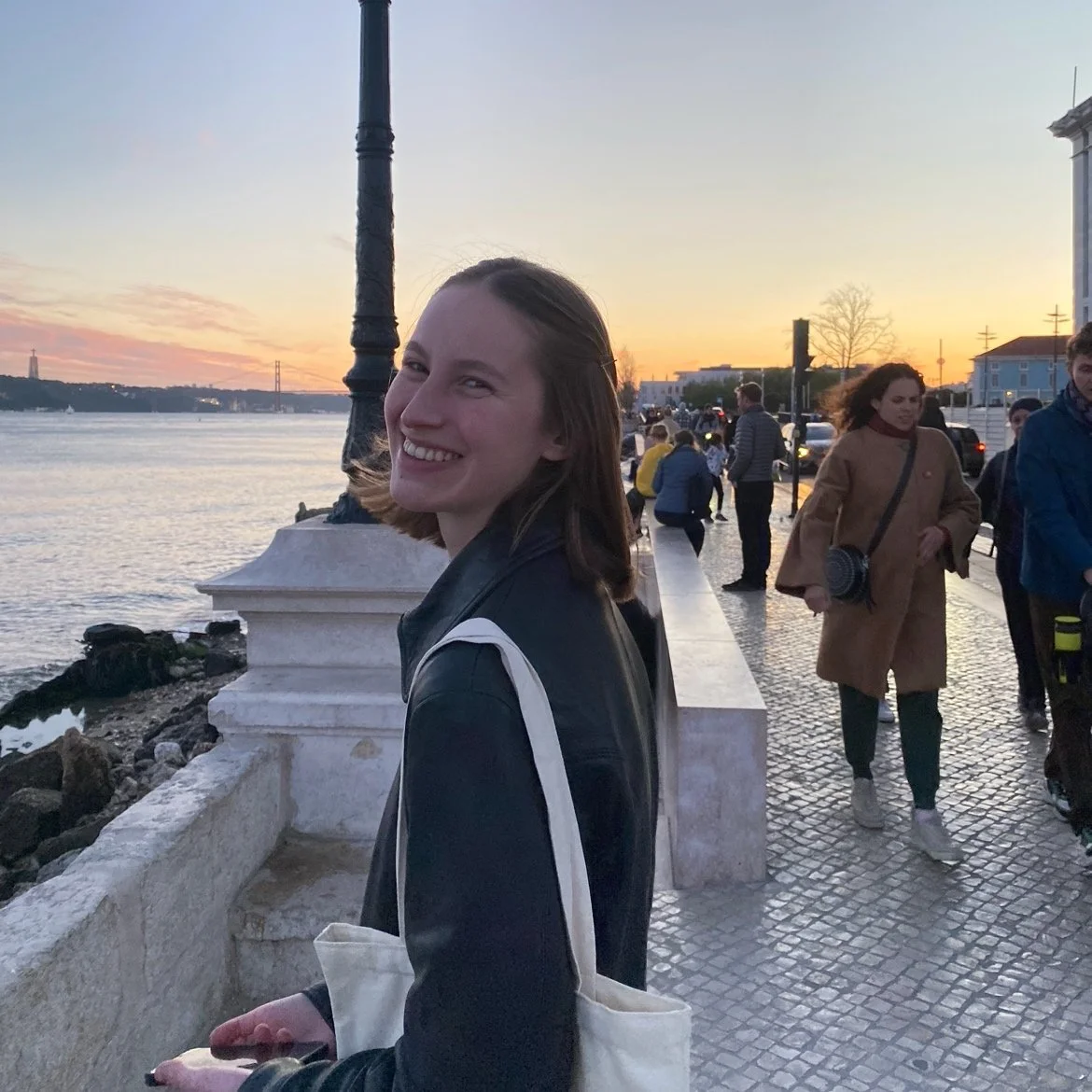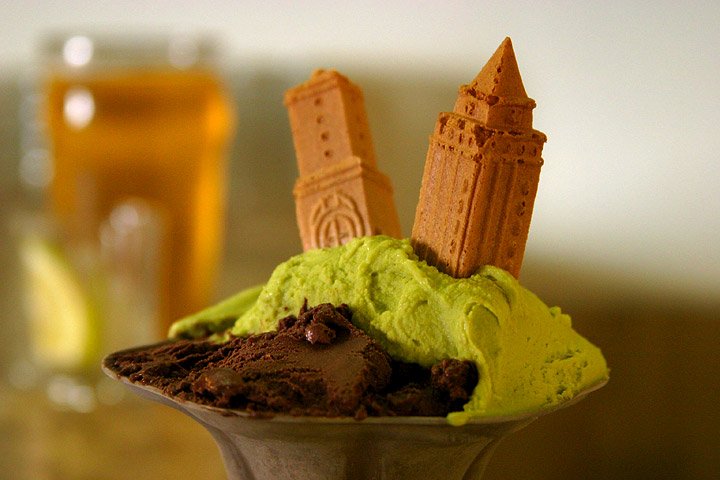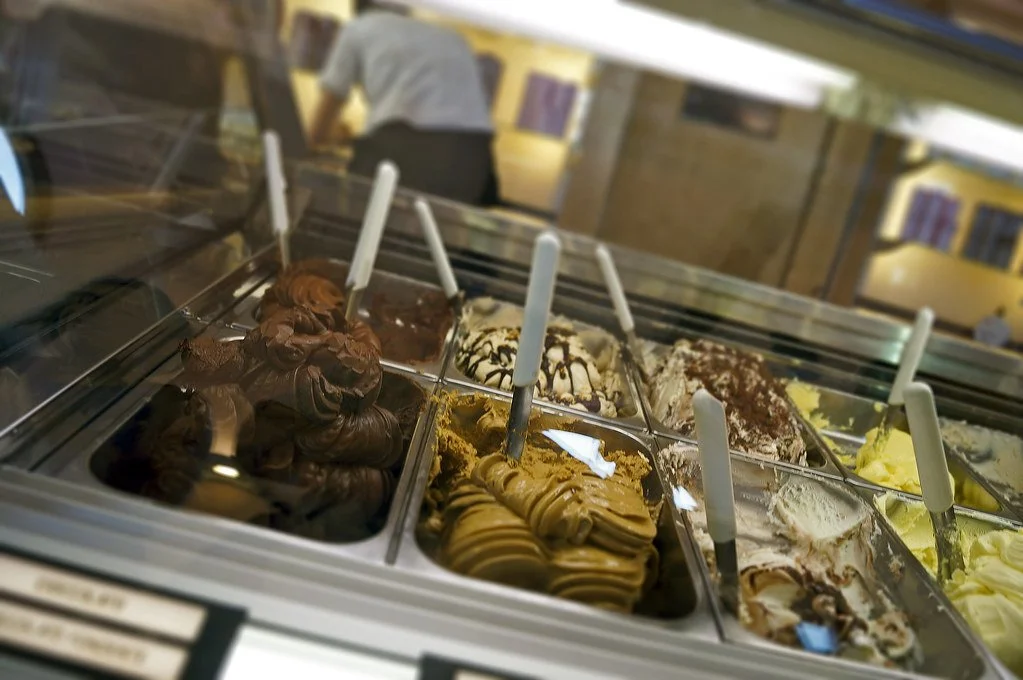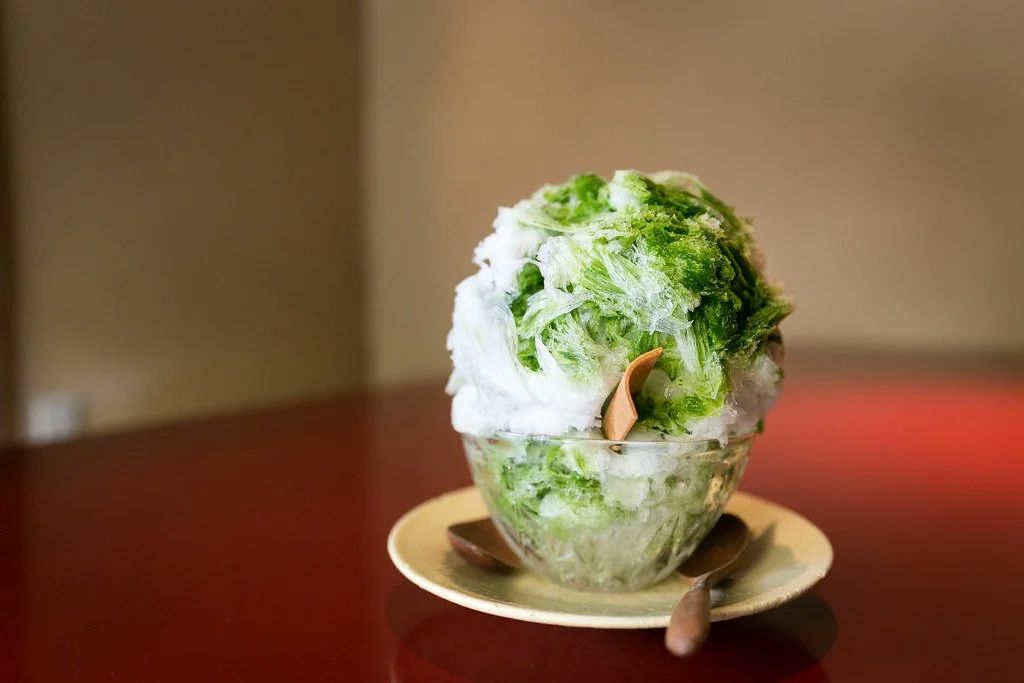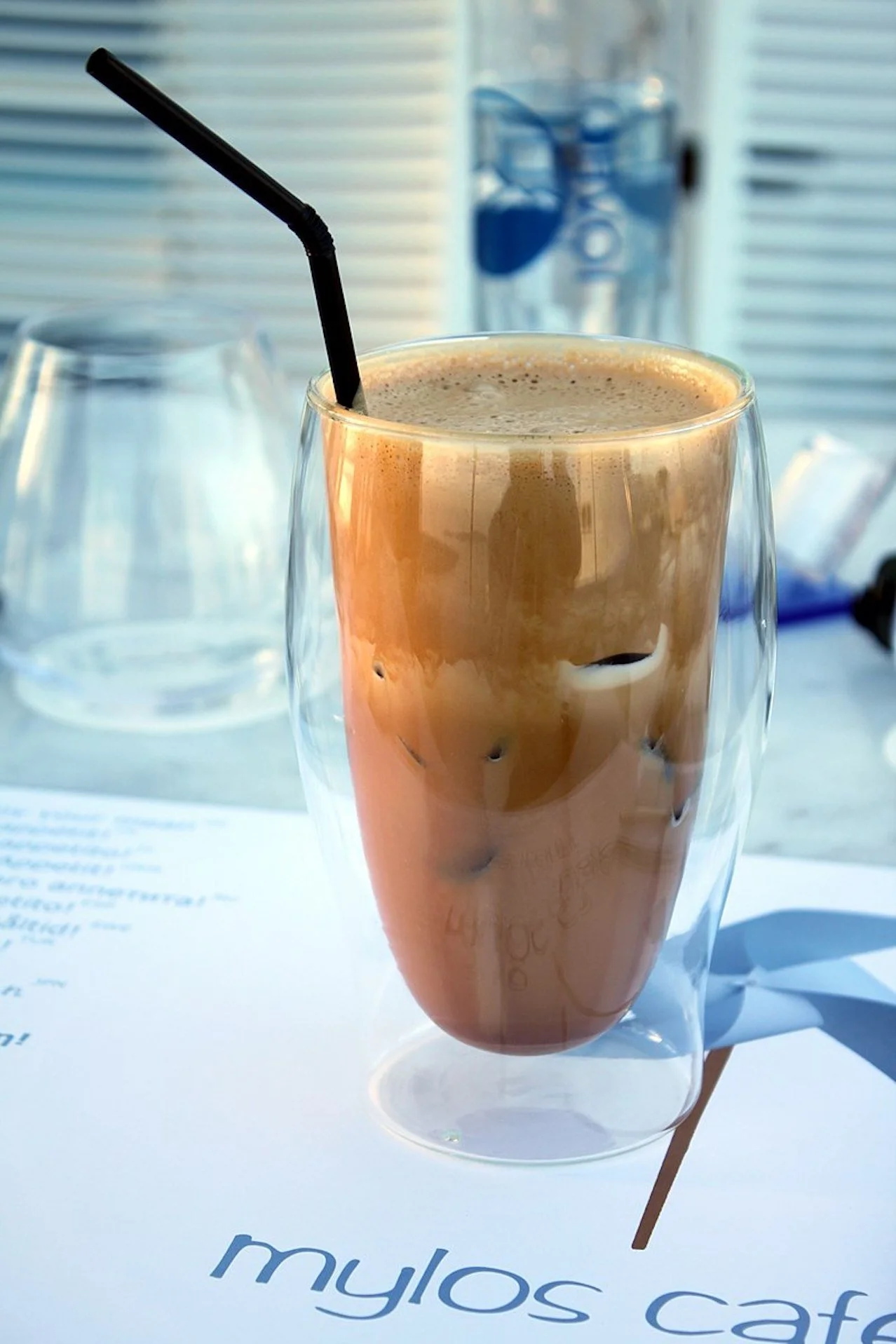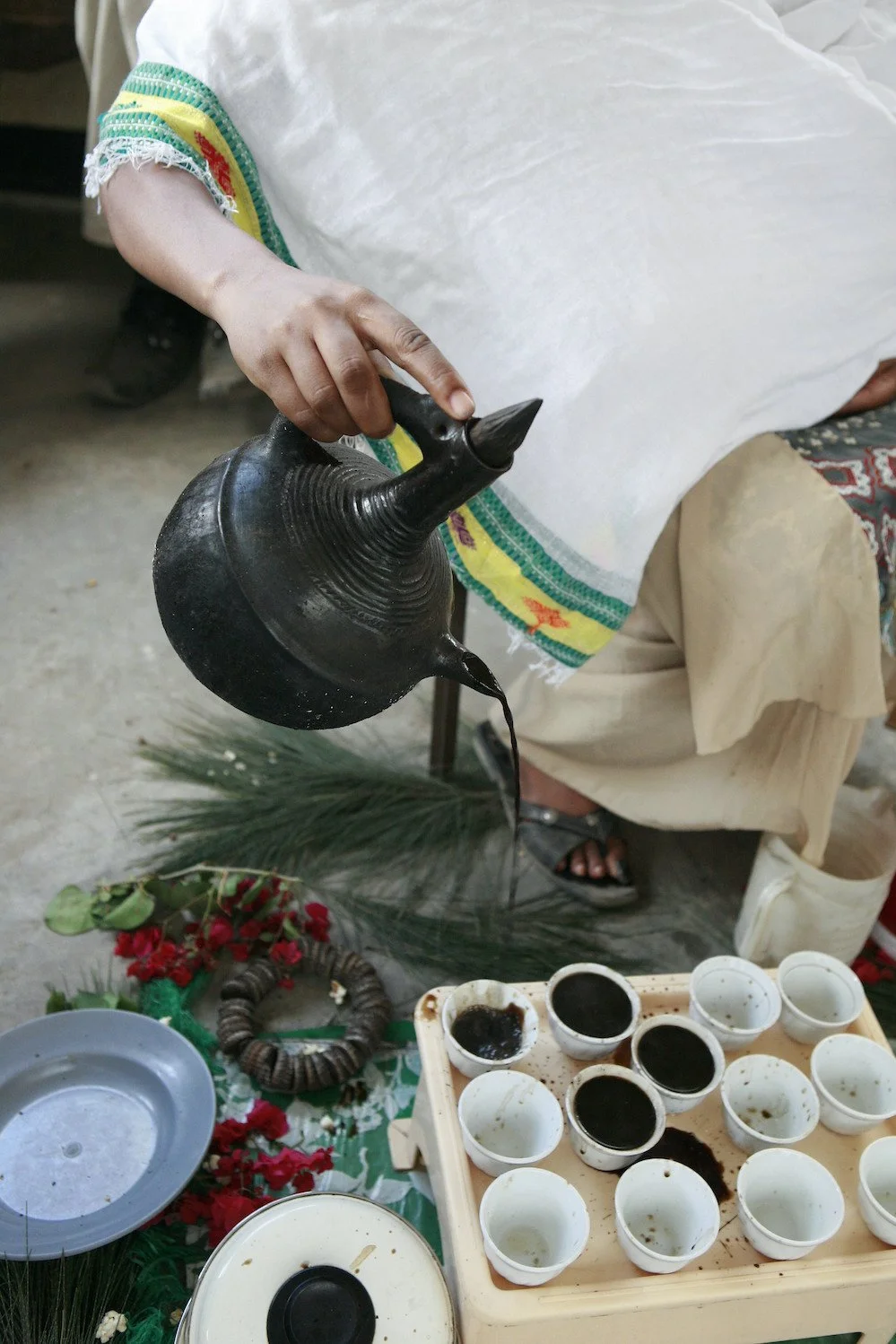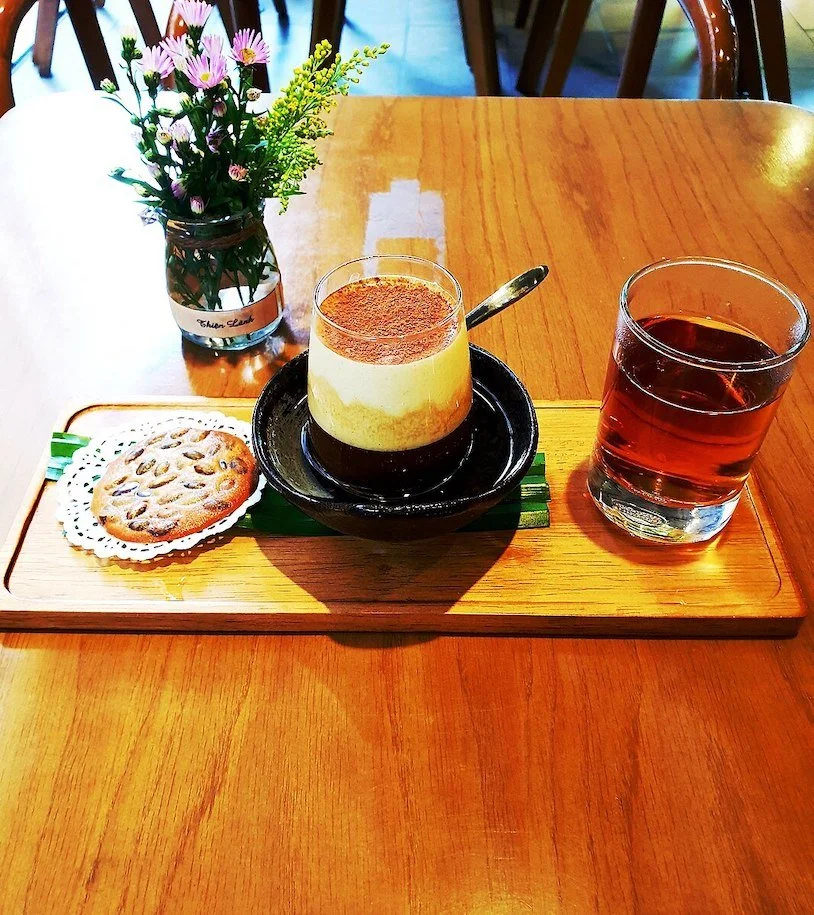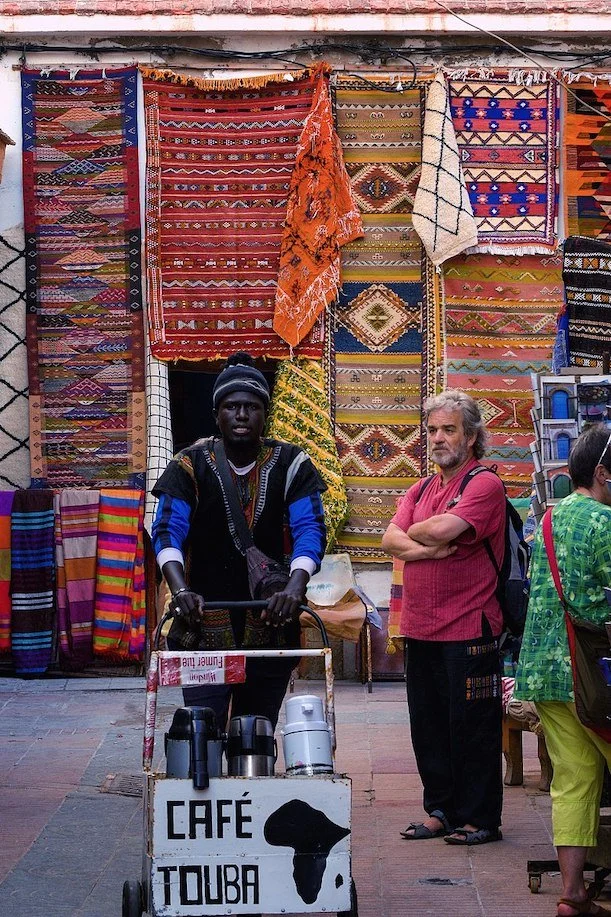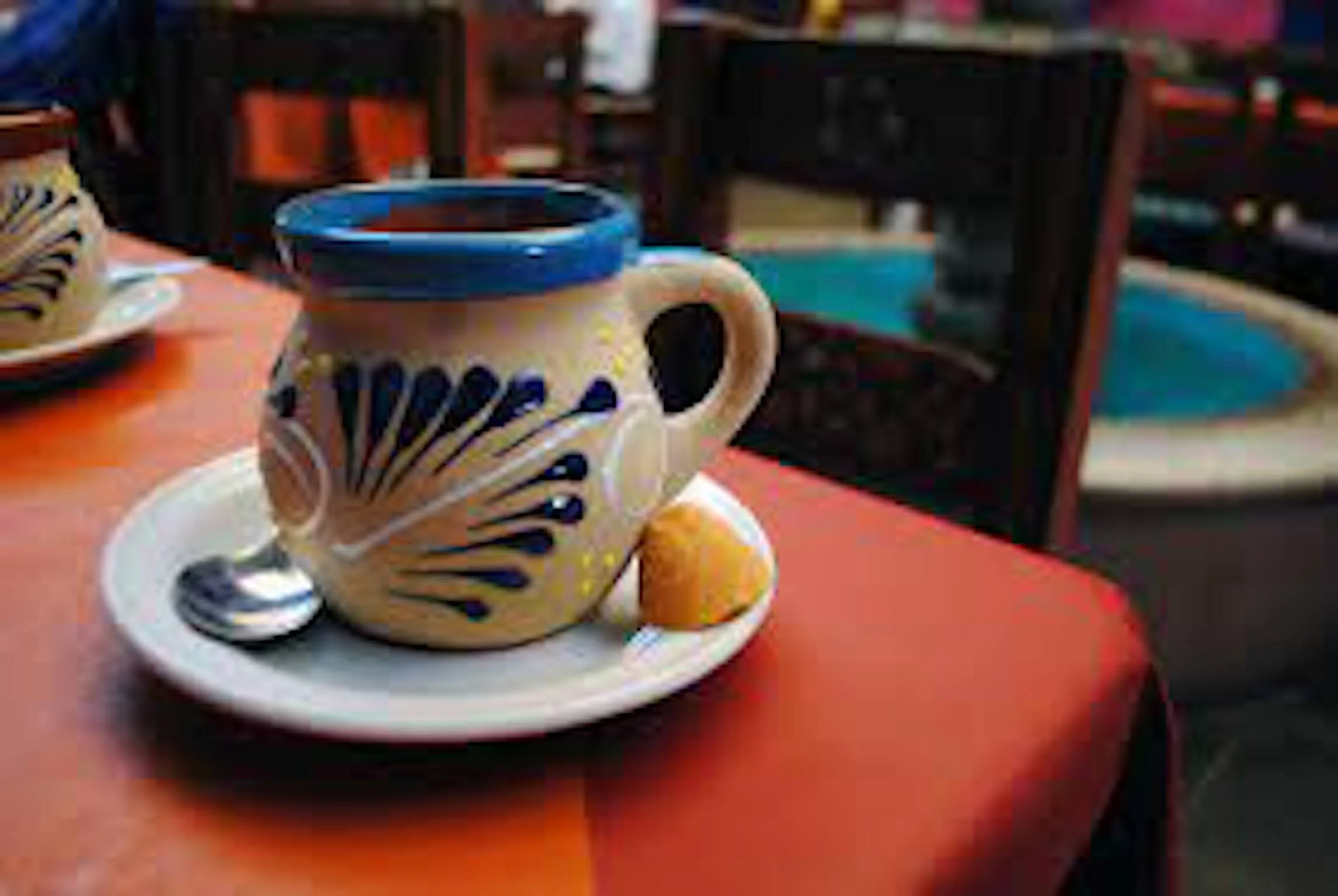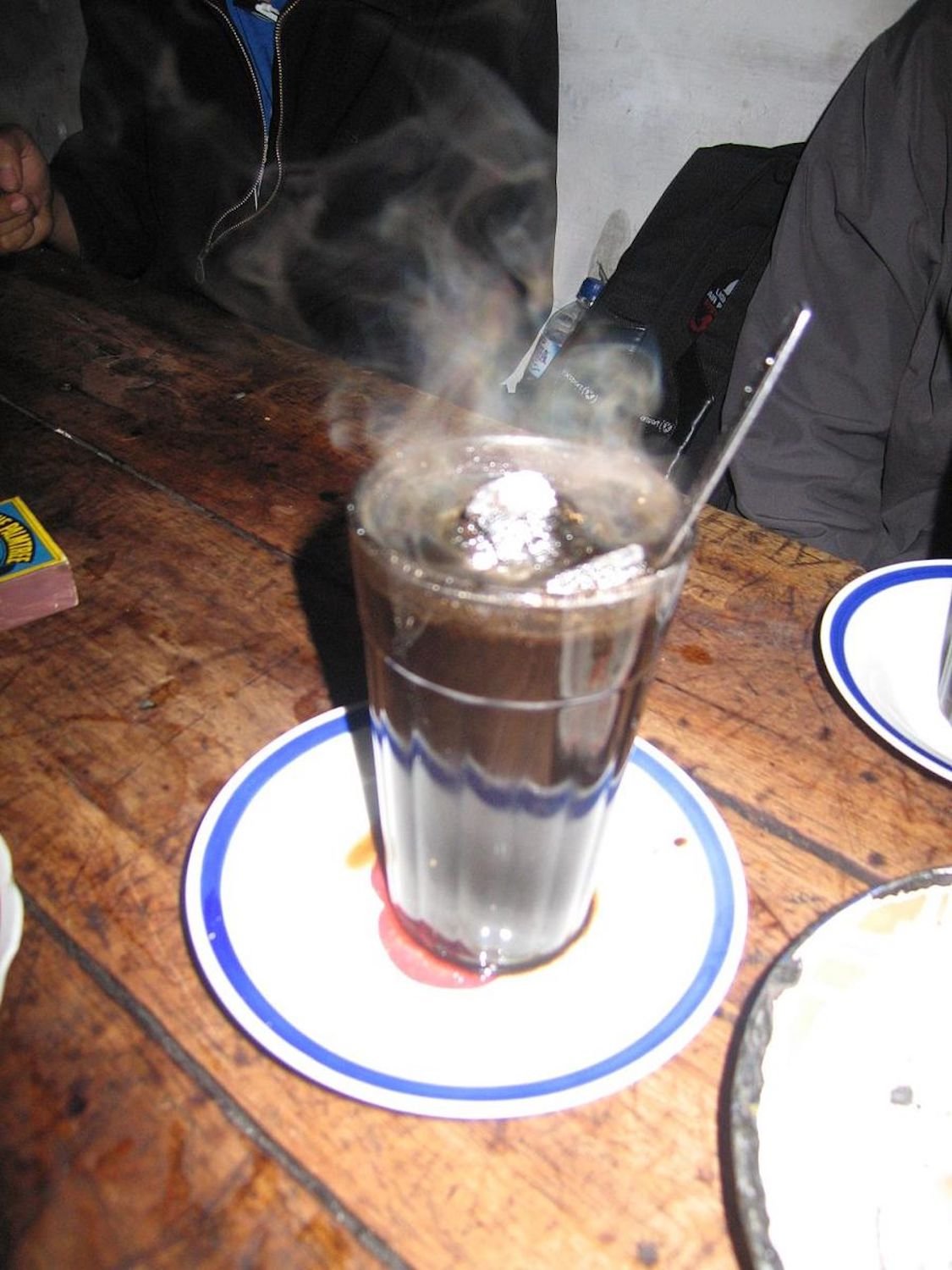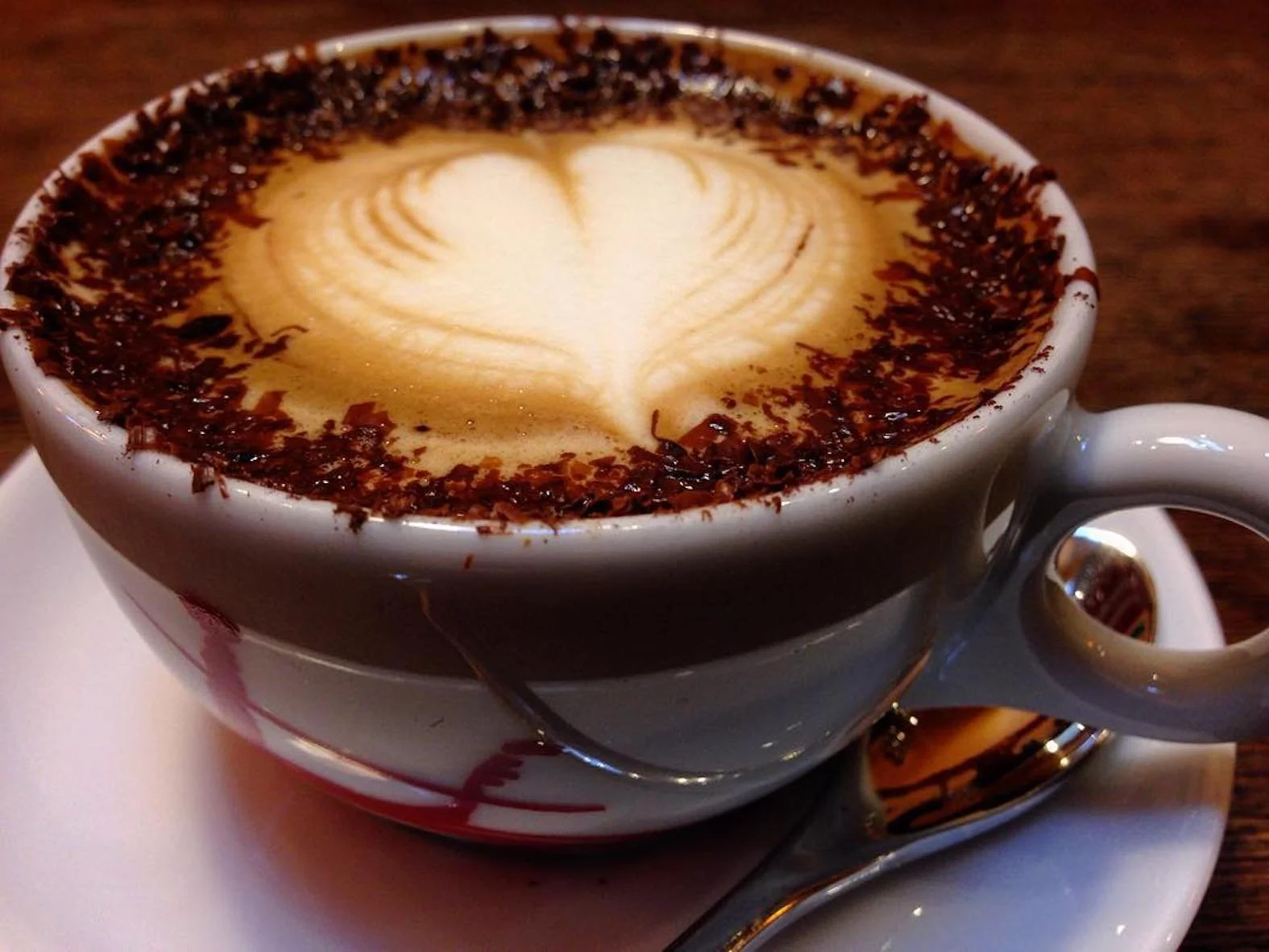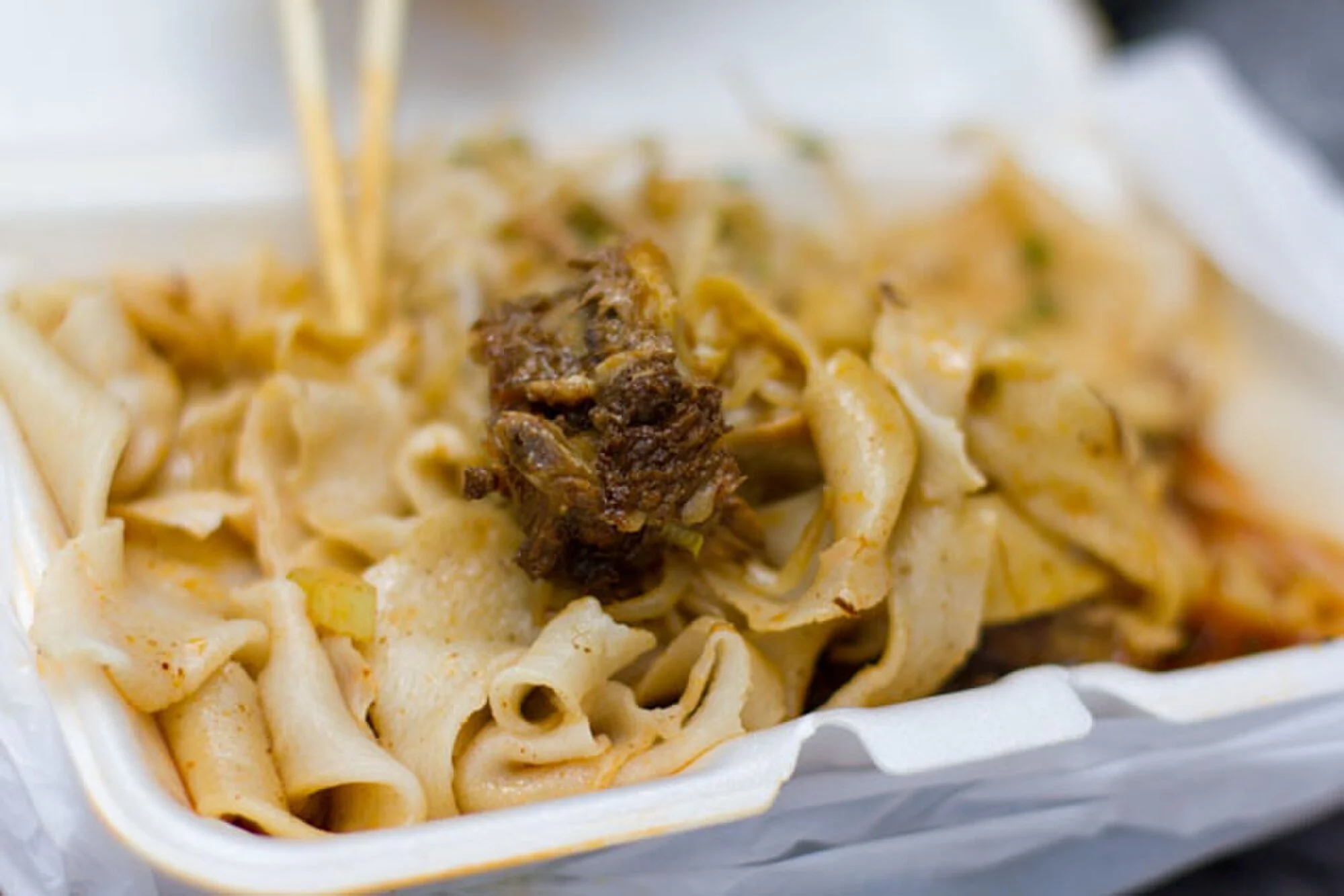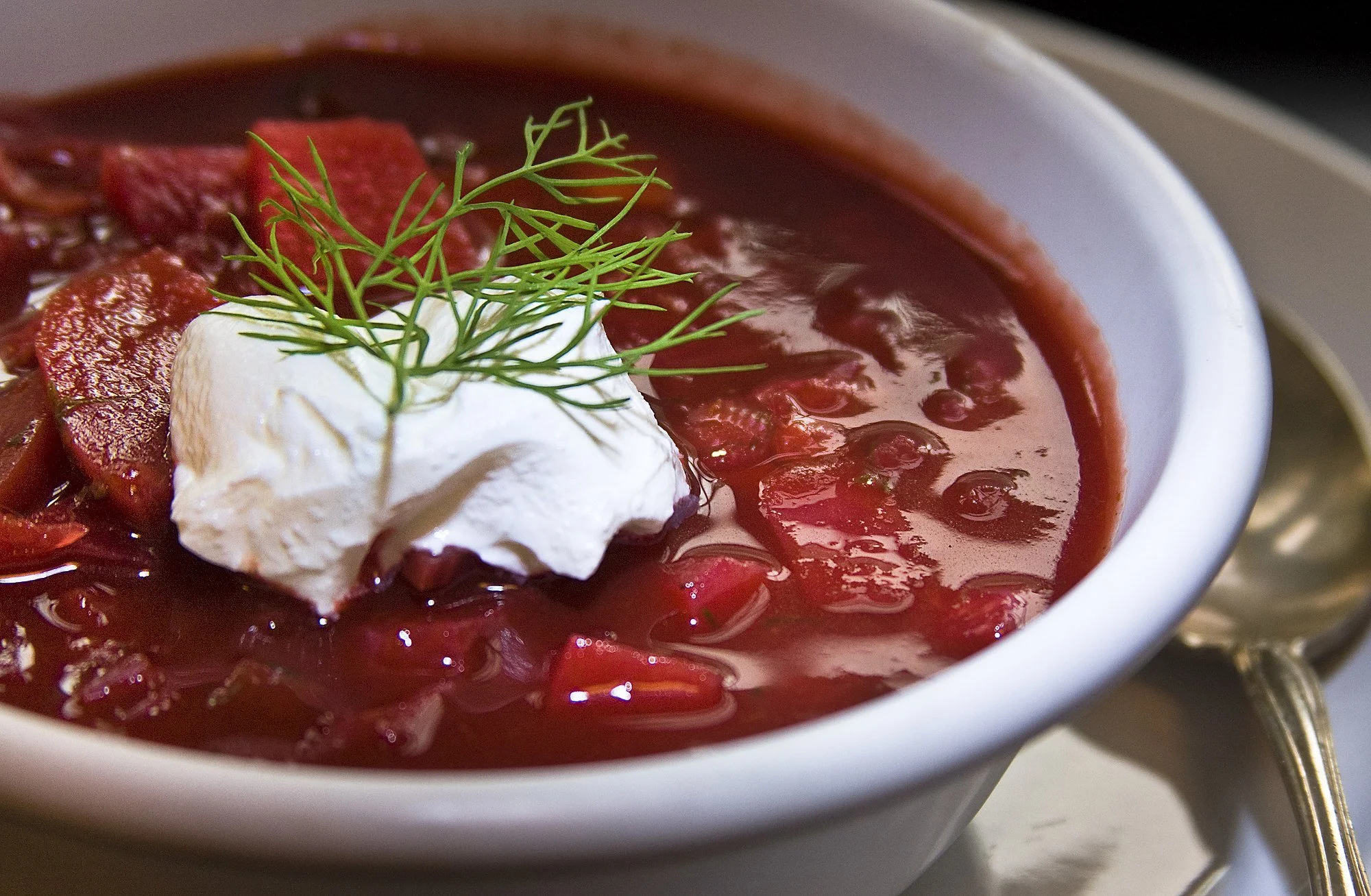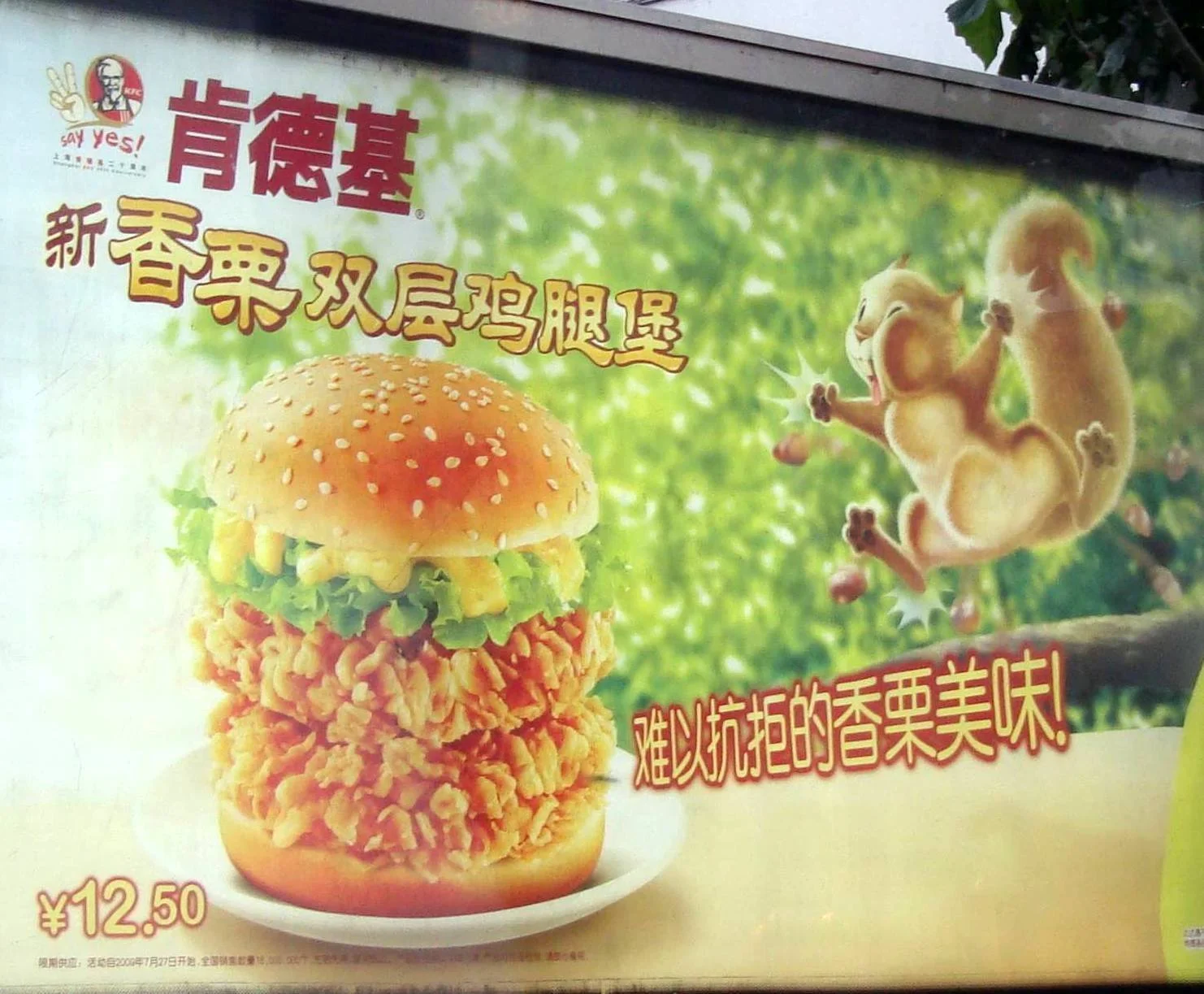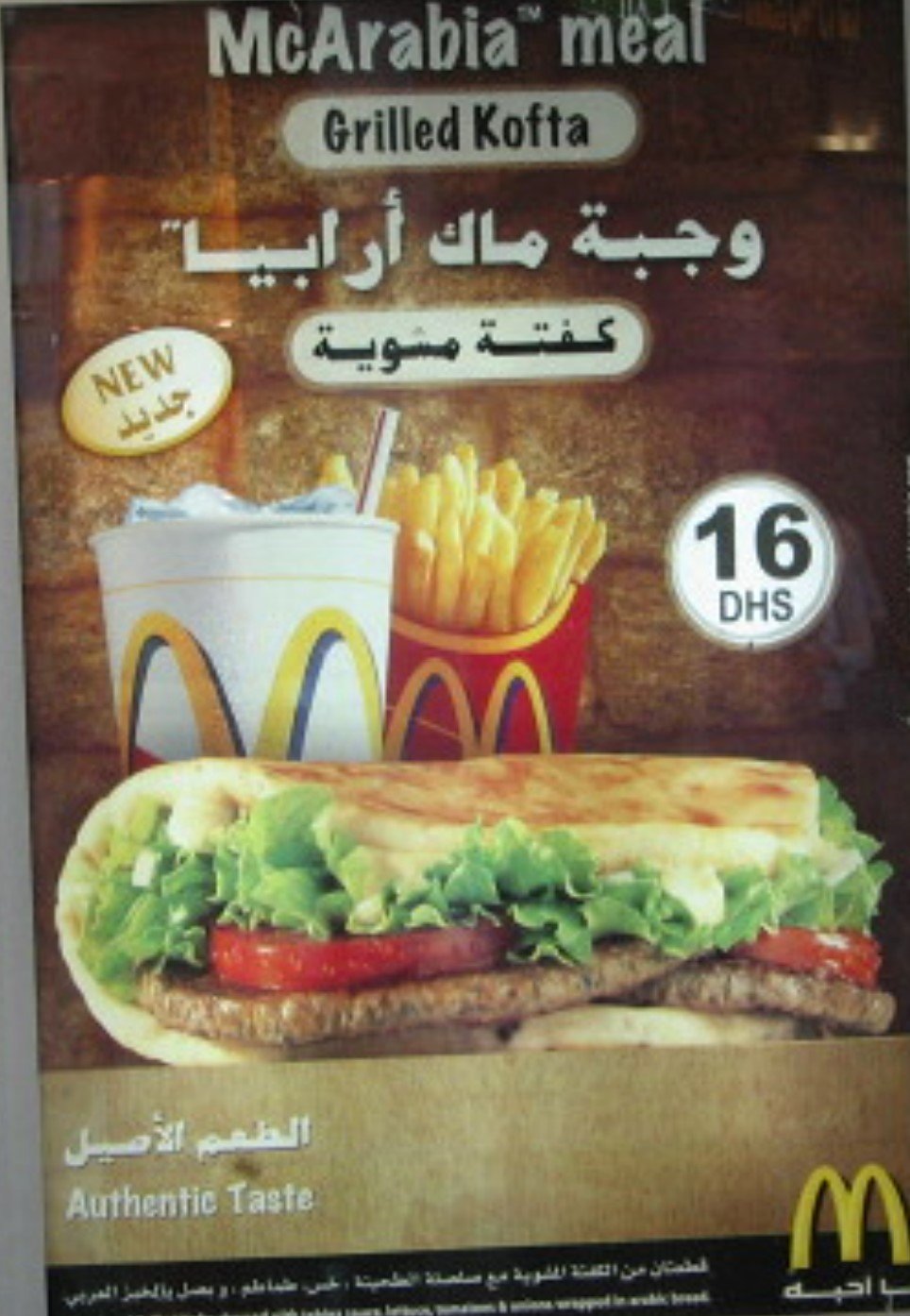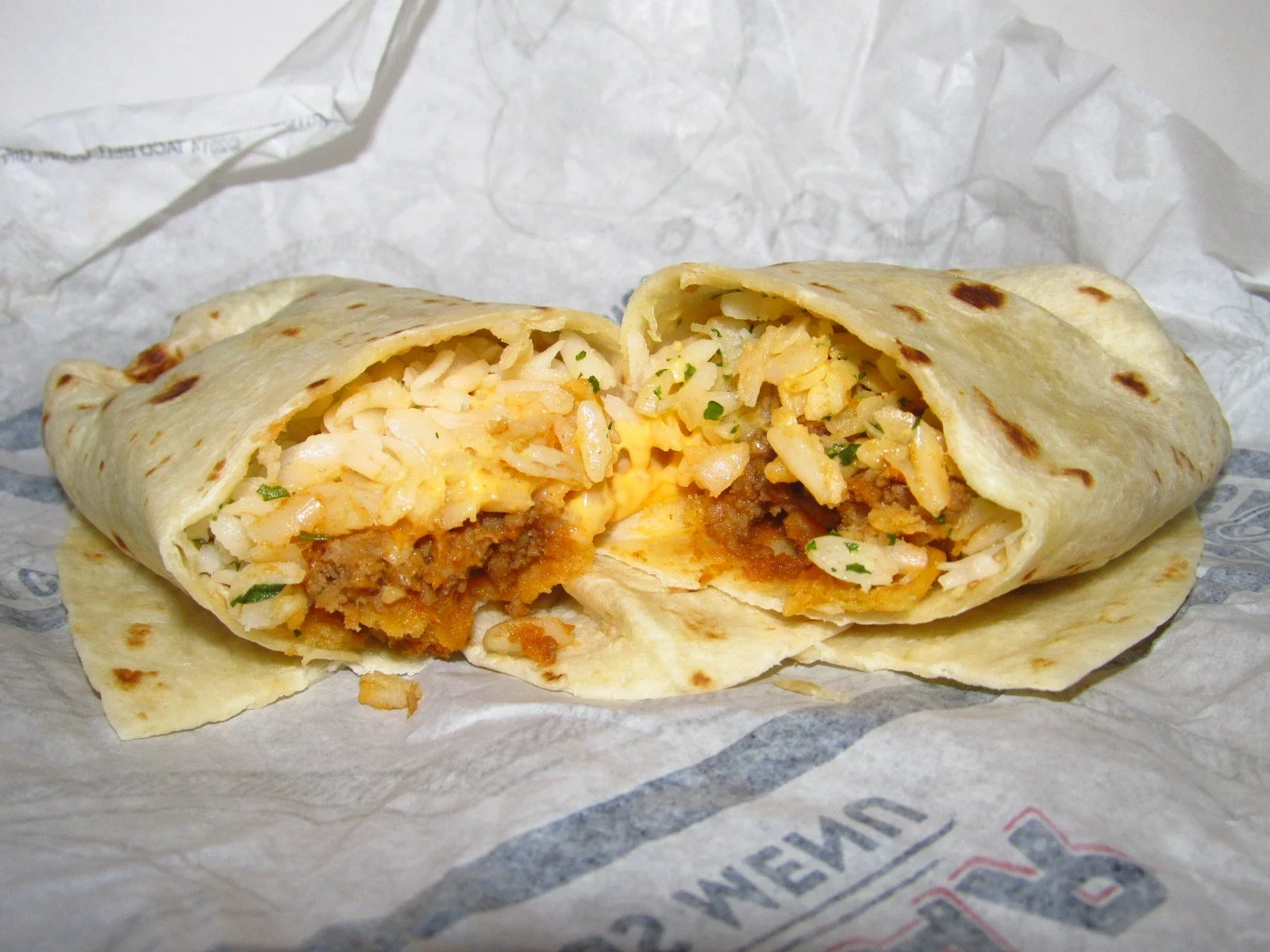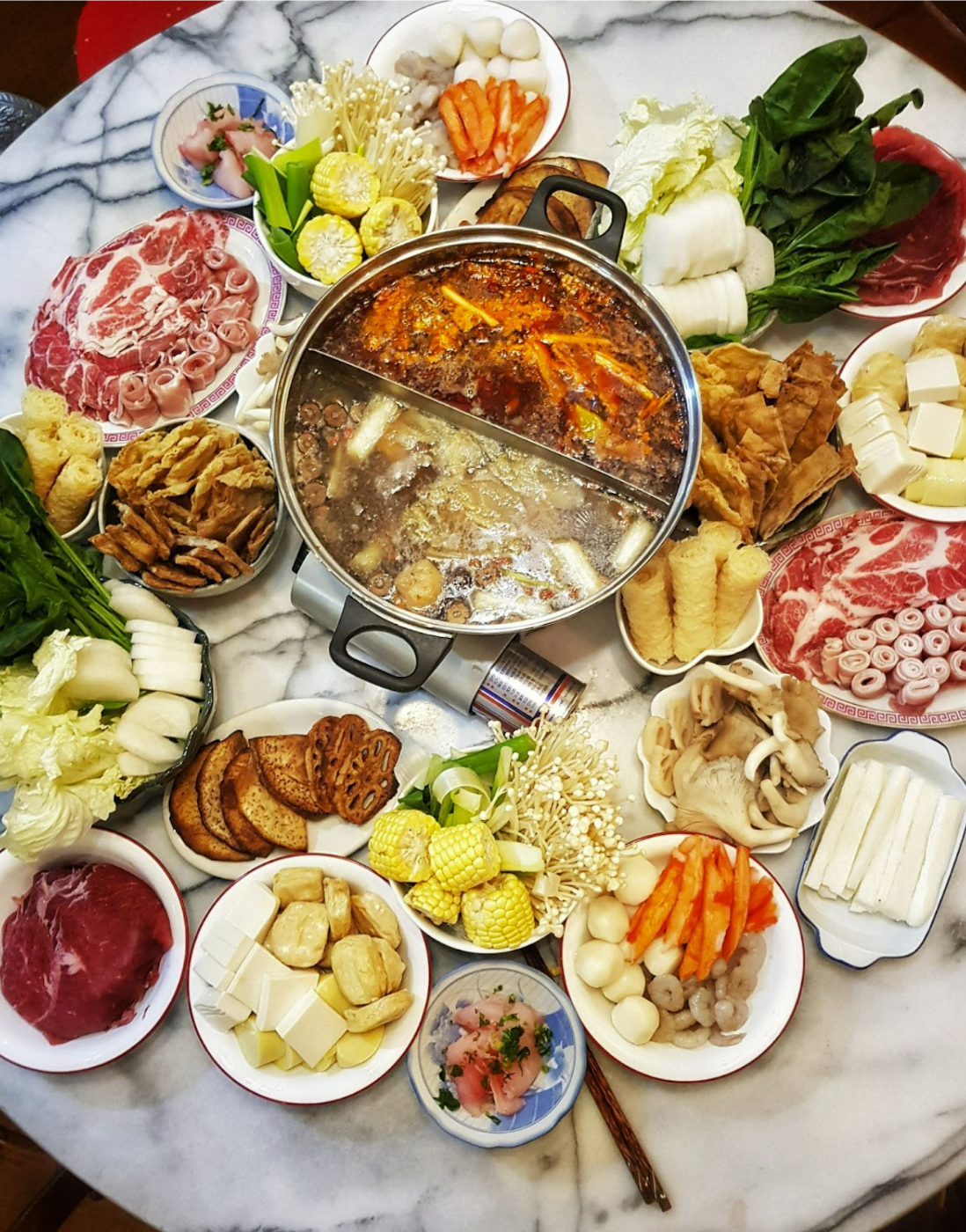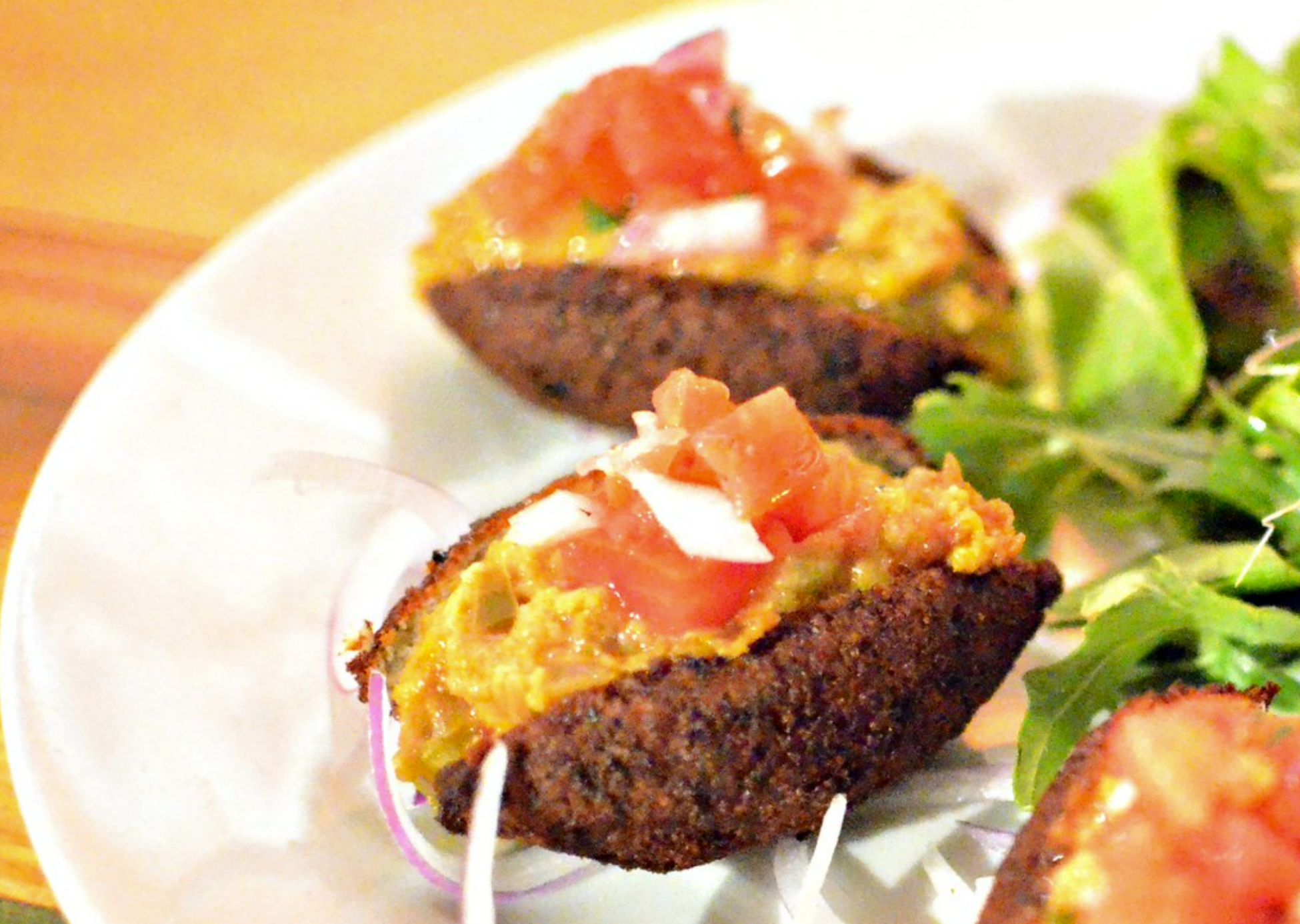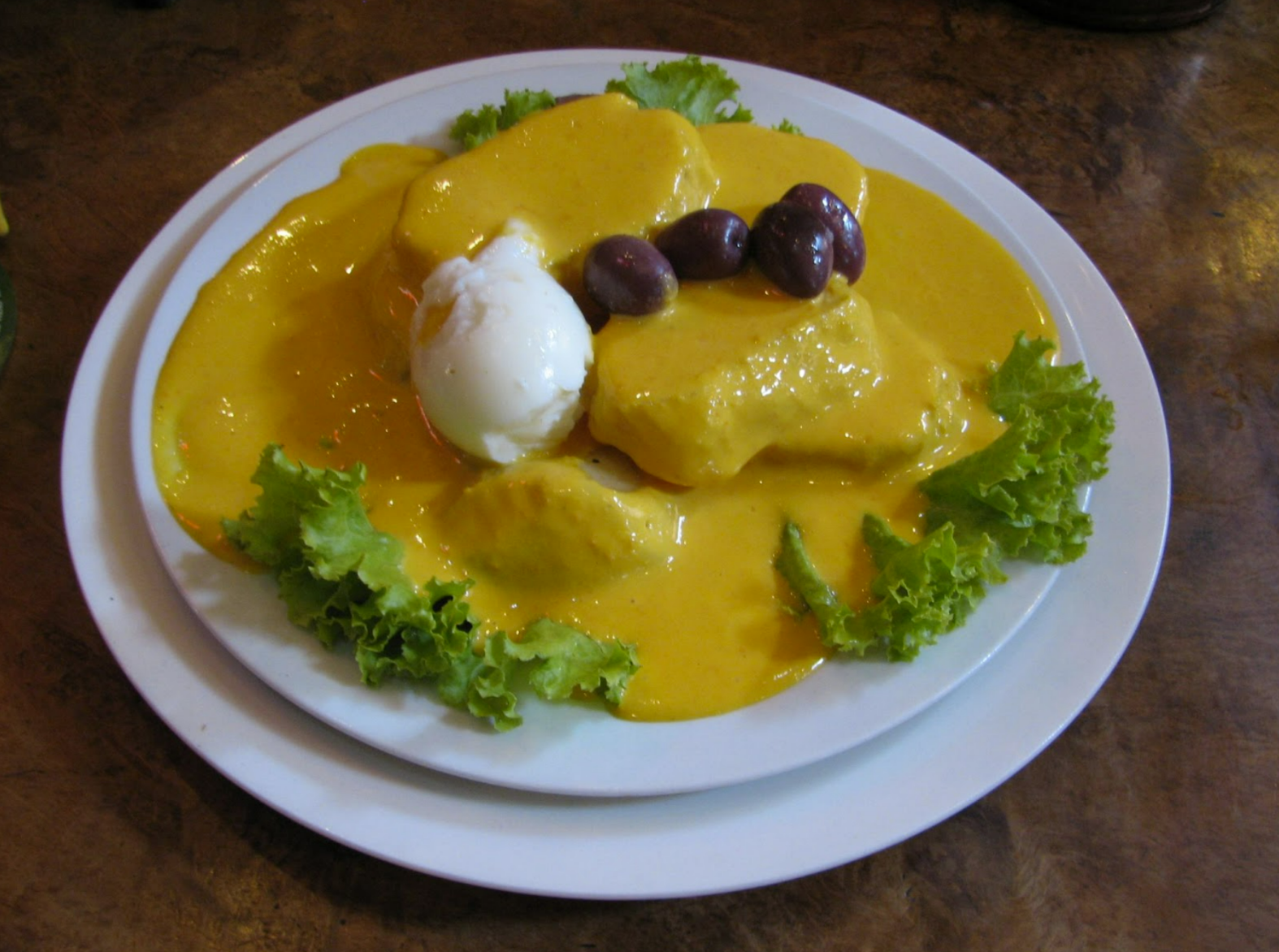With bustling markets like Borough and Spitalfields, and iconic restaurants such as Dishoom and Chishuru, London proves to be a multicultural dining destination for food lovers worldwide.
Read More10 International New Year Food Traditions that Bring Good Luck
A plethora of ways cultures worldwide celebrate the new year through delicious cuisine.
Read More7 Holiday Foods From Around the World — With Recipes
Spice up this holiday season by preparing one of these mouthwatering global cuisine dishes, recipes included!
Dongzhi (Winter Solstice) Festival Food, Tangyuan. Cats Coming. CC0.
Let’s face it: the holiday season can be stressful. Whether you’re preoccupied with finding the perfect gift for your mother-in-law or figuring out who is hosting your annual family holiday party, sometimes the warmth of this season of festivity gets lost. What won’t be stressful this year, however, is finding a new, unique recipe to try out. These seven holiday foods from around the world will keep everyone’s taste buds happy — even your in-laws! Whether your family prefers the coziness of a sweet treat or a savory dish that packs a punch, there is something on this list for everyone.
France — Buche de Noel
A Buche de Noel Cake with an intricate spiral. Mitantig. CC by 4.0.
Starting off strong with a chocolate lover’s dream, buche de Noel is a sugary confection that hails from France. Also known as a Yule Log, this confection is a rolled chocolate cake filled with rich cream. Both its shape and color are meant to resemble a—you guessed it—log. The dessert’s unconventional shape, however, is completely intentional. The history of the desert can be traced back to feudal taxes in medieval France, whereby peasants would bring logs to the homes of both feudal lords and their own families. Other accounts of the dessert’s history claim that families burned logs in their own home as a pagan rite to ensure a bountiful harvest for the coming year. In any case, Mon Petit Four provides a traditional recipe here.
2. Italy — Feast of the Seven Fishes
A seafood market in Genoa, Italy. Dade Rot. CC0.
A polar opposite of the sugary-sweet Buche de Noel Cake, Italy’s Feast of the Seven Fishes combines salty and savory flavors to create an elaborate selection of seafood dishes. On Christmas Eve, Italians and Italian-Americans gather around their kitchens and partake in this intergenerational tradition. Although the types of seafood dishes vary from family to family, the bonding and warmth that cooking this meal facilitates is universal. Whether plating more simple shellfish or an elaborate seafood pasta, however, the dishes hold a sense of significance. Both Italy’s long coastlines and large Roman Catholic population (many of whom either do not eat meat on Friday or on the eve of some holidays) have contributed to the beginnings of this tradition. A variety of seafood recipes featured in this iconic feast can be found here.
3. India — Gulab Jamun
Gulab Jamun. Cabeza2000. CC by 4.0.
Although this dessert is eaten on a variety of celebratory occasions—including birthdays and marriages—it is also eaten during Hindu holidays such as Diwali. Although this year's Diwali has already passed, gulab jamun is still the perfect treat to make during the winter months. These sphere shaped sweets are made of deep fried flour and khoya (dried, thickened milk), and can be eaten both cold or hot. Often they are served swimming in a sugar mixture and have a semi-sticky consistency. This dessert is popular in India as well as Pakistan, Nepal and the Maldives. Moreover, the gulab jamun is similar to the Arabic dessert Luqmat-al-Qadi. A simple, yet thorough, recipe to make gulab jamun can be found here.
4. West Africa (Senegal) — Jollof Rice
Jollof Rice Served with Plantains. Bukky658. CC by 4.0.
Jollof Rice Served with Plantains. Bukky658. CC by 4.0.
Another versatile dish, jollof rice is eaten during a variety of occasions in many different countries. Although its origin is disputed, the dish is believed to have come from the Wolof people of Senegal in West Africa—the word jollof comes from the Wolof language and can be translated as “one pot.” Indeed, in this meal many vegetables, including bell peppers and tomatoes, are combined with rice and cooking oil in a pot. Jollof's orange tint comes from these vegetables as well as fragrant spices such as turmeric and paprika. During the holiday season, jollof rice is commonly served among families who celebrate Christmas or Kwanzaa. Moreover, the dish is common in many African countries, including (but not limited to) Nigeria and The Gambia. More detailed information about spices and vegetables to include can be found in this recipe here.
5. Mexico — Tamales
Tamales wrapped in corn husks. Richard Elzey. CC by 2.0.
Cooking tamales isn’t simply about creating food; it also involves forging a sense of togetherness. Many Mexican and Mexican-American families come together every December to make this corn-based dish. Tamales can be traced back to Indigenous people in Mesoamerica, who offered bundles of corn as sacrifices to the gods. Today, families make tamales throughout the month of December leading up to Christmas. Tamales can be stuffed with a variety of meats, such as chicken or beef, as well as vegetarian-friendly beans and cheese. Traditionally, tamales are wrapped and cooked in corn husks or banana leaves, but these wrappings are not eaten. An authentic pork tamale recipe can be found here.
6. Australia — Grilled Prawns
Prawns with a lime garnish. Rasheed Rasheed. CC by 4.0.
In some places around the world, the holiday months trade in snowflakes for seasides and warm temperatures. Down under in Australia, seafood fills festive dinner menus because many winter holidays for those living in the Northern Hemisphere fall during the Southern Hemisphere's summer months. To stay cool, Australians will grill prawns outside rather than using their ovens to cook a traditional, elaborate holiday meal. In fact, during the month of December Australians consume 40% of their yearly prawn intake. Most families like to keep it simple and dress their prawns in garlic, lemon juice or olive oil to keep their feast refreshing and light during sweltering heat. A delicious, garlicky prawn recipe can be found here.
7. China — Tangyuan (Glutinous Rice Balls)
Tangyuan served in syrup. Wu Xiao. CC0.
The Dongzhi, or Chinese Winter Solstice Festival, would not be complete with Tangyuan. These glutinous rice balls are often filled with sesame paste, and have a nutty and semi-sweet flavor. This food has been eaten for at least over 1,000 years, although its origin is disputed; one possible account is that Tangyuan was either created or popularized during the Song dynasty. And, to keep warm during the solstice, the rice balls are always served warm. Their texture is similar to and yet less dense than mochi. A simple, quick recipe can be found here.
Carina Cole
Carina is a Media Studies student with a Correlate in Creative Writing at Vassar College. She is an avid journalist and occasional flash fiction writer. Her passion for writing overlaps with environmentalism, feminism, social justice, and a desire to travel beyond the United States. When she’s not writing, you can find her meticulously curating playlists or picking up a paintbrush.
Unknown Specialties: 10 Little-Known Global Dishes
Uncovering some of the best lesser-known cultural foods from around the world.
Khachapuri served with nuts. Ekkatterrinna. CC BY-SA 4.0
From sushi to falafel to chicken tikka masala, most cultures are represented on the global food stage. But for every well-known cultural classic, hundreds of local delights have never quite made it out of their homeland. This list compiles ten of the best, most unique specialties that most of the world has yet to experience. Each dish will include links to recipes and can be made at home with relative ease.
1. Lahmacun
Turkey
A traditionally wrapped lahmacun. Garret Ziegler. CC BY-SA 4.0
Lahmacun is a traditional flatbread variety that incorporates minced meat (usually lamb or beef), tomatoes and red peppers, and a healthy amount of garlic and chili pepper. Despite being commonly referred to as “Turkish pizza”, lahmacun is never prepared with cheese. Instead, the dish is often served rolled up around other vegetables like pickles or roast eggplant.
2. Kare-kare
The Philippines
A bowl of kare-kare. Maffeth.opiana. CC BY-SA 4.0
Kare-kare is a stew of thick peanut sauce. Typically made with oxtail and occasionally pigs’ or calves’ feet, kare-kare also features vegetables like eggplant and daikon. Some varieties include seafood (like prawns and squid), while others are entirely vegetarian. This dish has been a part of Filipino culture for hundreds of years and is considered one of the island nation’s staple dishes.
3. Zeljanica
The Balkans
A tray of zeljanica. BiHVolim. CC BY-SA 4.0
Often referred to as “savory spinach pie,” zeljanica is a flaky pastry filled with chopped spinach, egg and white or feta cheese. This particular meal has several options for substitution; just about any white cheese (preferably salted) can be used for the filling, and a variety of pastries can be used to make the outer shell, including phyllo or horiatiko (both of which are specialties in their own right).
4. Pastitsio
Greece
A plate of pastitsio. Sam Bailey. CC BY-SA 4.0
While this dish is often referred to as “Greek lasagna,” it takes a few steps outside of the box that sets it apart from its Italian cousin. Pastitsio has evolved over the years, transforming from a phyllo-wrapped meat pasta to a layered dish. The bottom layer is composed of bucatini or similarly-shaped pasta, bound together with cheese or eggs. The second layer features ground beef or pork heavily seasoned with cinnamon and cloves, and the top is a mixture of bechamel and mornay sauce.
5. Cou Cou
Barbados
An example of Cou Cou. KINGBROBLOXZZZ. CC BY-SA 4.0
Cou-cou is widely regarded as the best example of Barbados’ national food: the flying fish. While cou-cou is actually a mixture of cornmeal and okra, it is typically served alongside steamed or fried flying fish. Today, this meal is traditionally served on Friday in Barbados and has spread to Antigua and the Virgin Islands.
6. Khachapuri
Georgia
A variety of khachapuri including egg yolk. Rorschach11. CC 2.0
There are many varieties of Georgia’s khachapuri, but the most common (and most popular) is Imeretian khachapuri. This variation is made with yeast dough and filled with salted white cheese. Other varieties incorporate egg yolks, potatoes and a variety of seasonings.
7. Nacatamales
Nicaragua
A finished nacatamal. MiguelRamirez77. CC BY-SA 4.0
Nacatamales were historically made by Nicarao hunters who would wrap and steam herbs, deer and turkey meat in corn husks. Rapidly evolving into a cultural staple after the Spanish conquest of Nicaragua, nacatamales have continued to change throughout the centuries. Today, the dish is commonly wrapped in banana leaf and tinfoil and steamed for up to five hours.
8. Nam Khao
Laos
A pre-wrapped nam khao. Takeaway. CC BY-SA 3.0
Nam khao is a common dish throughout Laos, appearing everywhere from street stalls and potlucks to high-brow restaurants. The meal’s main ingredients include fried rice balls, classic Vietnamese pork sausage, chopped peanuts and other seasonings. Nam khao is unique from traditional salads as ingredients are used to fill a singular lettuce leaf before being topped with chili peppers and herbs.
9. Lo Mai Gai
Southern China
A variety of lo mai gai made with abalone. Peachyeung316. CC BY-SA 4.0
A gluten-rich rice stuffed with chicken, sausage, mushrooms and scallions, the most unique aspect of this variation on the classic dim sum is the method of cooking. Before being steamed, lo mai gai is wrapped in dried lotus leaves — in areas where lotus is not available, banana and grape leaves are frequently substituted.
10. Jollof Rice
West Africa
A variety of jollof including vegetables. Segun Famisa. CC BY-SA 4.0
Last but certainly not least is the ever-changing meal known as jollof rice, or jollof for short. This dish has a general ingredient list, but just about every nation in West Africa has its own regional variety, which has led to friendly rivalries between different regions. Typically, jollof is made with long rice grains, incorporating tomatoes, chili peppers, and a variety of spices together into one pot. Variations of the dish can range from different spices to the inclusion of additional vegetables or cuts of meat.
Few of the dishes on this list are available outside of their home country. However, the ingredients for each dish are relatively easy to obtain, so international foodies can find all the materials they need to cook some of these specialties at home.
Ryan Livingston
Ryan is a senior at The College of New Jersey, majoring in English and minoring in marketing. Since a young age, Ryan has been passionate about human rights and environmental action and uses his writing to educate wherever he can. He hopes to pursue a career in professional writing and spread his message even further.
Connecting with Culture: Embracing Food, Tradition and Language in Sri Lanka
With ancient Buddhist temples, stories of independence and deep-rooted traditions, Sri Lanka offers a South Asian experience unlike any other.
View from Elephant Sanctuary. Mira White.
The jewel of the Indian Ocean, Sri Lanka is recognized for its abundance of biodiversity and rich culture. Featuring vast rainforests, idyllic beaches and towering mountain ranges, the island is a hotspot for elephants, pink sand beaches and adventurous travelers. Its extensive history bridges the divide between the past and the present.
Dambulla Cave Temple. Mira White.
Living with a host family in Colombo and working for the Sri Lankan grassroots organization, Gammadda, I was able to experience the authenticity of Sri Lankan local life. Sponsored by Brown University, I interned for Gammadda, a group that prides itself on being an initiative “for the people by the people” while traveling across the country to complete rural development projects. Regardless of whether I was with my host family, at the office or in a remote part of the island, I was continuously exposed to an outstanding variety of new cultures, customs and habits.
My ten weeks living in Sri Lanka presented me with the opportunity to immerse myself in various facets of a culture older than any other I’ve experienced. Surrounded by Sinhala, spiced curry and tuk-tuks, I adapted to a lifestyle consumed by the language barrier, a diet of rice and, often, unpredictable transportation. Despite my unfamiliarity with Sri Lankan customs and traditions, I was always welcomed with kindness and understanding.
I arrived at the end of May, near the end of Sri Lanka’s Vesak Festival which celebrates the birth, enlightenment and death of Lord Buddha. The Colombo Bandaranaike International Airport was decorated with traditional flags and lights hanging from the ceiling. Upon my entrance into the country, I was greeted with warm welcomes and joyful smiles from coworkers and my host family, a testament to the real pride that Sri Lankans feel in welcoming internationals to their country.
Arriving at Colombo Bandaranaike International Airport. Mira White.
Living with a host family provided me with an intimate view of Sri Lankan life. Most mornings for the family began with the traditional Sri Lankan breakfast of rice and curry. At dinner, I was introduced to an array of rich spices and flavors and encouraged to try string hoppers, kottu and roti—so long as I could stomach food with intense spice— I could not.
My host family took great joy in seeing me taste their country’s diverse cuisine and were often eager to share with me the components and history of each dish. Aside from the food we shared, they took pride in speaking Sinhala and Tamil around me, hoping I would catch on to some words. They were eager to teach me small bits of the local languages in order to make me feel more integrated into their world. By the end of my trip, I could confidently say that I was familiar with simple phrases and greetings. I was elated to hear someone say “kohomada”—how are you?— when they answered the phone.
The hospitality of my host family extended beyond the dining table. They offered to take me on multiple excursions, highlighting places that showcased the island’s natural beauty. One memorable trip was to the Pinnawala Elephant Orphanage where I had the chance to see and touch elephants up close.
Pinnawala Elephant Orphanage. Mira White.
In the office, camaraderie among my co-workers was one of my most rewarding experiences. Colleagues helped me navigate office culture and even brought me to their homes to help dress me in a traditional Kandyan saree for formal work events, a gesture that made me feel deeply connected to those that I’d met in Sri Lanka and its local traditions.
Gammadda Colleagues. Mira White.
Beyond the office, co-workers were enthusiastic about sharing their local knowledge. They recommended must-see places and offered to accompany me on several outings to explore the island. They eagerly encouraged me to delve into local traditions and festivals. While on field site trips together, they encouraged me to try different foods and went out of their way to bring me to nearby sites to experience the natural richness of the island. Through their guidance, I gained a deeper understanding of the Sri Lankan business, cultural, and personal life that makes up the nation’s diverse tapestry.
Fieldwork took me to various parts of Sri Lanka, including areas severely impacted by poverty and climate change. The challenges faced by locals were stark—drought, erratic weather and economic hardship painted a sobering picture of life outside of Colombo. Despite the difficult circumstances under which I met those in rural villages, the warmth and gratitude of each individual was remarkable. My co-workers and I were welcomed into homes with genuine hospitality and kindness, often through the form of shared meals.
During projects for the grassroots organization I worked for, locals performed traditional dances and musical performances. These ceremonies provided a glimpse into their cultural heritage, underscoring their determination to preserve the connection to their roots against all odds. The people I encountered lived a life deeply intertwined with their faith and traditions. Their resilient authenticity stood in contrast to the struggles that they faced, demonstrating their profound strength and pride.
Traditional Dance Ceremony. Mira White.
During one particular ceremony, I was asked to join project organizers and funders in lighting a ceremonial candle in tribute to the work done. This act had been a gesture of symbolic participation in local customs, connecting me deeply with this specific community and the challenges of its people.
Candle Lighting Ceremony. Mira White.
Children in the Koleyaya community. Mira White.
This sense of community was evident in all of my interactions, whether with colleagues, rural children or just observing those on the side of the road. Sri Lanka’s allure as a tourist destination extends far beyond its picturesque landscapes alongside cities such as Kandy or Sigiriya Rock. The island’s cultural richness is reflected in its food, language and music, each of which tells a story of history and pride. Through sampling local cuisine, attending cultural festivals and engaging with the community, visitors are provided with deep insight into how Sri Lankans navigate the complexities of their environment while maintaining an exuberant spirit.
In the face of its challenges, Sri Lankans have cultivated a culture of warmth and hospitality. For those who choose to visit the island, the experience is as much about understanding the cultural landscape as it is about witnessing breathtaking beauty. Sri Lankans’ deep-rooted cultural pride is matched only by their kindness, making every visitor feel like a cherished guest. Beyond its landscape, Sri Lanka offers an opportunity to immerse oneself fully in a culture that thrives on connection and community. The enthusiasm with which locals invite you to explore their traditions, participate in ceremonies, learn the language and experience their daily lives creates a unique journey that I have yet to experience anywhere else. Once you’ve visited Sri Lanka, you become part of a larger family that eagerly awaits your return. Truly, Sri Lanka is more than just the jewel of the Indian Ocean, for visitors, it becomes a home away from home—a transformative experience that will call you back to its shores.
Families in Koleyaya village in Badulla District. Mira White.
Mira White
Mira is a student at Brown University studying international and public affairs. Passionate about travel and language learning, she is eager to visit each continent to better understand the world and the people across it. In her free time she perfects her French, hoping to someday live in France working as a freelance journalist or in international affairs.
The Rise of Cat Cafes: Popularity and Pitfalls
While they have a rich history and are fun for humans, cat cafes are a hot topic in animal rights ethics.
Cat in cafe window. Atahan Demir. CC0.
Scooping litter, carpets of cat hair, vet visits and medical bills: taking care of a cat—or any other animal, for that matter—can be both tedious and expensive. But on the other hand, cats are adorable, energetic and entertaining furballs. Previously, there was no in between—if you wanted a cat, it was either all in or nothing. Now there is an in-between solution: cat cafes. Cat cafes serve typical coffee shop beverages and pastries with the added bonus of being able to spend time with a variety of cats and kittens. Often cat cafes charge based on time spent at the cafe, with most cafes having set rates for either 30 minutes or one hour with the cats.
Although cat cafes are currently immensely popular, at one point they weren’t the global phenomenon they are today. The first cat cafe, Cat Flower Garden, was founded in Taipei, Taiwan in 1998. Although there were other cafes to house cats prior to Cat Flower Garden, they were the first cafe to market themselves specifically as being a cat cafe. Now, people from both Taiwan and around the world not only come to play with their fifteen in-house cats, but also to ask for business advice. When Cat Flower Garden first opened its doors, however, business was slow. It took both time and media coverage for people to warm up to the idea of having cats pounce around hot drinks and food.
A cat sitting near a cup of coffee. Bulat Khamitov. CC0.
Tourists brought the idea back to Japan, and in 2004 a cafe in Osaka successfully opened. Multiple cafes opened in Tokyo in 2005 and soon the demand for cat cafes took off. People from around the world traveled to both the original location in Taiwan and the new business ventures in Japan’s metropolises. The cafes opened in Japan were a turning point in this phenomenon’s popularity because cities like Osaka and Tokyo are so densely populated that many people do not have the room or time to be able to take care of cats properly. Thus, people who did not own pets but were still cat lovers could have an opportunity to spend time with their favorite animal.
As business boomed in Asia, many people in the United States also took note of the cafe's popularity. As the first cafe in the United States opened in Oakland, California in 2014, when pet food company Purina ONE sponsored a pop-up cafe in New York City that same year, the public became even more interested in this new, eccentric concept. But, as cat cafes began to pop up throughout the United States and on a global scale—with openings in Melbourne, Australia, Munich, Germany and London, for example—some began to question the ethics of cat cafes.
Lounging Cat. Pixabay. CC0.
One United Kingdom based animal welfare charity, the Royal Society for the Prevention of Cruelty to Animals (RSPCA), made a statement that deemed cat cafes unethical due to the poor, unstable socialization of cats and the occasional unclean cafe. Moreover, many cafes do not properly vaccinate or neuter their cats, leading to diseases running rampant among their tenants. Also, while many cat cafes source their animals from rescues, some rely on breeders, giving no succor to the vast number of shelter cats that are left unadopted and, in turn, are euthanized.
At the same time, many cat cafes source their animals from rescues or shelters, which in turn helps them get adopted by cafe patrons. This is why if you want to reap the benefits of cat cafes—which have reportedly been linked to reducing anxiety in humans—you should know how to identify an ethical versus unethical cafe. An easy call ahead can help determine the status of the cafe. First, you can ask where the cats living in the cafe are sourced from, if they can be adopted, and if they have been both vaccinated and neutered. You can also plan a visit to the cafe before investing money in a session. If the cat cafe is dirty, the cats do not have proper spaces to retreat to if overwhelmed, or if the staff do not have proper knowledge of how to properly care for a cat, then it may be safe to deem the cafe unethical. Whether you intend to enjoy some delicious coffee and quick play time with cats or are considering adoption, here are ten popular cafes:
Carina Cole
Carina Cole is a media studies student with a concentration in creative writing at Vassar College. She is an avid journalist and occasional flash fiction writer. Her passion for writing overlaps with environmentalism, feminism, social justice, and a desire to travel beyond the United States. When she’s not writing, you can find her meticulously curating playlists or picking up a paintbrush.
The Peranakan: A Unique Southeast Asian Fusion Culture Rooted in Region’s Traditions
The Peranakan culture is defined by its multicultural roots that have long-lasting influences on the Malay Peninsula. From food to fashion, the Peranakan occupy a unique role in the region’s extensive history.
Peranakans heavily influenced the region’s architecture—the iconic shophouse being one of those contributions. Gildardo Saánchez. CC BY-NC-SA 2.0.
Along the Malacca Strait, an enduring and eclectic culture still survives. The Peranakan is a syncretic minority group mainly found on the Malay Peninsula. Peranakans are descendants of early multicultural unions; southern Chinese traders and settlers would marry local Malay, Thai and Javanese women. Though their origins go back over 600 years, Peranakan culture was at its most influential between the late 19th and 20th centuries. Out of this union came a unique fusion identity that birthed new languages like Baba Malay as well as terms like “babas” and “nyonyas” to describe Peranakan men and women.
The Peranakan have roots in Indonesia, Malaysia, Singapore, Myanmar and even on the Thai island of Phuket. Jpatokal. CC SA 1.0.
In a 2009 study, former National University of Malaysia professor Lee Su Kim chronicled the niche position that Peranakans inhabited in the region. As children of mixed cultures, the Peranakan were multilingual and acted as intermediaries between different ethnic groups. During the colonial era, these skills entrenched Peranakans as a hierarchical elite. They acquired material wealth, were educated in British schools, and occupied roles such as diplomats and record-keepers.
A medley of iconic Peranakan foods including rendang and stir-fry kangkong leaves with dehydrated mini shrimp. Tammi Kwok. CC BY 2.0.
Baskets of desserts including the iconic nyonya kuih, coconut confections made from glutinous rice and pandan. Chotda. CC BY-NC-ND 2.0.
Despite being a minority, Peranakan culture has also infused itself into nearly every plate in the region. From iconic dishes like asam laksa (a spicy seafood noodle soup served with mint and ginger) to chendol (a shaved ice dessert slathered in coconut milk, palm sugar syrup, and other sweet treats), Peranakan cuisine—or Nyonya cooking—has created a unique palette that is representative of the region’s multiethnic populace. Not only is the cuisine widespread within the region, but also proof of the prolific trade that once flourished in the past.
In 2016, the Journal of Ethnic Foods published a study on the historical perspectives of Nyonya cuisine in Malaysia, finding that Peranakan cooking was simply an extension of the “cultural borrowing and cultural innovation through contact with local ingredients.” As a trading hub, Peranakan cuisine evolved to include Thai, Indian, Dutch, Portuguese and English cooking techniques.
Despite these rich contributions, the knowledge of Peranakan culture is fading. In a personal blog, Peranakan descendant Shahan Cheong details how the destruction of World War II all but obliterated history and routine along the Malacca Strait. Although pieces of Peranakan culture survive through architecture, styles of dress, food and decor, few living descendants can actively recount the story behind each historical artifact and site.
Guo Pei’s creations were loosely inspired by Peranakan fashion; they were showcased at the summer 2019 Asian Civilizations Museum exhibition in Singapore. Courtesy of Rhiannon Koh.
However, there have been efforts to revitalize Peranakan culture. In the summer of 2019, the Asian Civilizations Museum in Singapore housed pieces by renowned designer Guo Pei. Part of the exhibit showcased several dresses and wedding gowns emulating the beads and colors of Peranakan fashion. A few months later in November, Miss Malaysia-Universe donned a Peranakan-themed national costume to symbolize the beauty and multicultural heritage of Malaysia. In 2020, the New Straits Times ran a piece on the enduring legacy of Peranakan fashion; styles like the kebaya dress and the staple cotton sarong are still worn. Ultimately, historical records and other forms of art like cultural plays have been crucial in reviving dusty memories of the Peranakans’ grand past.
Rhiannon Koh
Rhiannon earned her B.A. in Urban Studies & Planning from UC San Diego. Her honors thesis was a speculative fiction piece exploring the aspects of surveillance technology, climate change, and the future of urbanized humanity. She is committed to expanding the stories we tell.
The Extensive Cuisine of Chinese Muslims
From pita bread to lamb, halal Chinese food’s influences stretch from the Mediterranean to Russia and from China to the Middle East.
Street vendors feed crowds with a doughy treat in Urumqi, the capital of China’s Xinjiang Uyghur Autonomous Region. People’s Development Bank. CC BY-NC-ND 2.0.
China has around 23 million Muslims, predominantly made up of the Hui and the Uyghur ethnic groups. Chinese Islam began in 651 A.D., when Islam was first introduced to the country by Arab traders under the Tang dynasty. A diverse array of religions and cultures were brought to Tang China, including Islam, Judaism and Zoroastrianism. However, Islam was the only religion of these to make a lasting impression on the Chinese population. Chinese Islam expanded to different regions and soon developed its own local traditions and foods. The culinary wealth that sprang from Chinese Islamic heritage progressed into popular street foods and dishes still consumed by Chinese people today.
Hui Cuisine
Hui Muslims mostly occupy areas in the Ningxia autonomous region in China’s northwest. Their cuisine is called “qingzhen cai,” loosely meaning “pure truth” in Mandarin. This reflects the widely associated cleanliness of qingzhen restaurants due to their prohibition on smoking and drinking alcohol. Hui cuisine quickly spread across China due to its unique and much-loved flavors.
Close-up shot of aiwowo. Dozen Dessert. CC BY 2.0.
A decadent Hui dessert that remains popular among street vendors is aiwowo, or “love drops.” These small round buns are made of sweet glutinous rice flour and are dusted with a blend of sesame seeds, sugar and walnut kernel chips. Though aiwowo’s inspiration is from Hui cuisine, the snack has become a popular roadside treat in Beijing.
Lanzhou beef noodles in a hot and earthy broth. Language Teaching. CC BY 2.0.
Another seminal dish of the qingzhen cai tradition is Lanzhou beef noodle soup. Many consider this soup to be the most famous noodle dish in all of China. The base of this hearty dish is an aromatic beef broth boiled with cumin seeds, Sichuan peppercorns, onions, ginger, star anise and cinnamon. The fresh, chewy hand-pulled noodles are placed in the broth on a bed of beef slices and chili oil.
Uyghur Food
Uyghurs first came to China around the 3rd century A.D., and ruled over their own kingdom in the 8th century in present-day northern Mongolia. Today, Uyghur populations are concentrated in the Xinjiang Autonomous Region in far northwest China. The Chinese government has recently gained notoriety for setting up large-scale prison camps in Xinjiang, with critics calling it a “genocide” and an attempt to entirely wipe out the Uyghur populace.
Uyghurs tend to draw flavors from Central Asian, Middle Eastern and Chinese cuisines. Both the Hui and the Uyghurs base their dining experience around beef and lamb, avoiding pork due to religious purposes.
However, Uyghur foods draw far more on their Turkish influence: baked goods such as girda naan, similar to bagels, are central to their cuisine.
A vendor prepares lamb kebabs on a coal-fired barbecue for a busy night in Xinjiang. S. Tsui. CC BY-NC-ND 2.0.
In Xinjiang’s capital of Urumqi, visitors can find local vendors selling mutton kebabs, which are pieces of sheep flavored with cumin, paprika, salt and pepper, placed on a skewer and seared over smoky charcoal.
Roasted lamb from a halal restaurant in Beijing. Ulterior Epicure. CC BY-NC-ND 2.0.
Perhaps the most famous Uyghur-inspired dish is roasted whole lamb. Rubbed with a spicy menagerie of cumin, salt, ginger and pepper, the lamb is coated with a flour and yolk batter and baked in a special oven for an hour. This dish is considered a luxury that deserves only the highest-quality meat.
Pile of nang in Xinjiang. Umami. CC BY 2.0.
Another famous Uyghur staple is nang, which is reminiscent of naan bread: a flat pancake-like bread made of corn flour, wheat flour or sorghum flour. This is a building block of Uyghur cuisine, as it comes in a multitude of flavors and seasonings, from a savory sesame coating to a buttery sweet glaze.
Chinese halal food is embraced all over China today, as it continues to combine influences from around the world into culinary treats. With the expansion of Hui and Uyghur influences into Chinese food culture, the intermingling of various flavors will only broaden the appeal of this special cuisine.
Heather Lim
recently earned her B.A. in Literatures in English from University of California, San Diego. She was editor of the Arts and Culture section of The Triton, a student-run newspaper. She plans on working in art criticism, which combines her love of visual art with her passion for journalism.
17 Breakfasts Around the World
American breakfast foods, like pancakes and waffles, are not the norm across the globe. Breakfasts differ widely in size and taste across these 17 countries.
Most Americans grow up hearing that breakfast is the most important meal of the day, and are familiar with U.S. breakfast staples like pancakes, cereal and eggs. However, breakfast around the world doesn’t look the same as it does in the U.S.
Although elements like breads, cheeses and fruits pop up in breakfasts in many countries, the meal itself widely varies. The type of food served differs around the world, including regional variations within countries. Some nations opt for a sweet breakfast, while others prefer a more savory meal. The size of the breakfast also varies, from Spain and Norway, where breakfast is often just a cup of coffee and a small bite; to the English fry-up, which is a plate loaded with different foods. Here’s what breakfast looks like in 17 different countries.
1. India
Breakfast in India varies widely by region. In the north, one traditional breakfast is paratha, a whole wheat flatbread stuffed with potatoes, spices and herbs. It is usually served with veggie or lentil curry or a yogurt sauce. In the south, a breakfast staple is idiyappam—steamed noodles made from rice flour. Idiyappam can be sweet or savory and is typically served with either cardamom-spiced coconut milk, vegetable korma, or a curry. In western India, Khaman Dhokla—savory cakes made from chickpea flour—are a popular way to start the day. Other breakfast items in India include rice dishes like pongal and poha, and breads such as roti and poori.
2. Japan
A typical Japanese breakfast is not just one item but a spread of foods that make up a well-rounded meal, one that could also be eaten as lunch or dinner. Japanese breakfasts usually include steamed rice, miso soup, some sort of protein like eggs or grilled fish and a number of side dishes such as nori (dried seaweed), natto (fermented soybeans) and tsukemono (Japanese pickles), as well as other small vegetable plates.
3. Germany
Like in Japan, breakfast in Germany is usually a spread of items. To American eyes, a German breakfast might look a bit like a charcuterie board—sliced meats and cheeses are breakfast staples, as well as sausages, brots (bread) and rolls served with butter or jam, and fruits and vegetables. Bavaria, a state in the southeast of Germany, has its own unique breakfast offering: a sausage called weisswurst. Weisswurst, or white sausage, is made from a mix of veal and back bacon, seasoned with parsley, onion and a number of other spices. Weisswurst was invented in Bavaria, and a typical “Bavarian Breakfast” is weisswurst served with pretzels and beer.
4. Cambodia
One of Cambodia’s most popular breakfasts is kuy teav, a Chinese-inspired hot noodle soup with rice vermicelli noodles, bean-sprouts, dried onion, carrot, parsnip and fresh vegetables. Lime, chili sauce, fish sauce, or soy sauce are also common add-ins in kuy teav, which can be made with meat options such as fish balls, chicken, or pork. Kuy teav is often enjoyed with a cup of coffee in the morning. Other typical breakfasts in Cambodia include bai sach chrouk (rice with pork) and bobor kreung (rice porridge).
6. Egypt
Fava beans are an essential element of two popular Eyptian breakfasts: ful medames and taameya. Ful medames is a simple dish made of stewed fava beans mashed with lemon, cumin and garlic, often served with toasted pita and a tomato-cucumber salad. Taameya are sometimes called Egyptian falafel; while they are similar to falafel, taameya are made from fava beans rather than chickpeas.
7. Greece
In Greece, as well as other Mediterranean countries, breakfast consists of a series of small dishes: savory pies such as spanakopita (made from spinach, feta and phyllo dough), yogurt with fruit and honey, various cheeses and fresh vegetables. A key element of a Greek breakfast is bread, with one of the most popular being eliopsomo—bread with kalamata olives baked into it. Eliopsomo is often paired with feta cheese and olive oil.
8. Morocco
A typical Moroccan breakfast is bessara, which can take the form of either a soup or a porridge made from split peas or fava beans and seasoned with garlic, lemon juice, olive oil, cumin and paprika. The thicker version of the dish is often used as a dip and accompanied by a loaf of Moroccan bread, or khobz.
9. Bolivia
Marraqueta refers to both a crunchy, oval-shaped bread roll popular in Latin America and a common Bolivian breakfast. The breakfast features a marraqueta roll as the main element. For a quick meal, the roll is served with a slice of cheese or grilled meat and accompanied by a cup of coffee. For a more filling breakfast, usually eaten on the weekend, a marraqueta roll is served with chairo, a thick soup frequently made with lamb and vegetables, or fricasé, a spicy pork stew.
10. Norway
Breakfast in Norway is a much lighter affair compared to some other countries. Lunch and dinner in Norway are both eaten relatively early; lunch is often at 11am and dinner at 4 or 5pm, which is the reason for the small breakfast. A typical Norweigan breakfast is brunost, a brown goat’s-milk cheese that tastes subtly of caramel. At breakfast, brunost is eaten spread on toast. Another popular breakfast is smoked salmon and scrambled eggs, which is also sometimes served on toast.
11. Lebanon
Manakish (or Manakeesh) are sometimes called Lebanese pizza, and are a go-to breakfast in Lebanon. Manakish are crispy flatbreads which can be topped with almost anything. A few common toppings include za’atar, a Middle-Eastern spice blend; cheese; onion and tomato; and kishk, a popular dairy product made from wheat and fermented milk or yogurt. Manakish are usually about the size of a personal pizza and are eaten folded in half, like a sandwich.
12. Philippines
A favored breakfast item in the Philippines is a torta, which is similar to an omelet. Filipino tortas are filled with ground meat and vegetables—frequently potatoes or eggplant—and usually served over rice. The name torta comes from the Spanish word for cake and is evidence of the heavy Spanish influence in the Philippines.
13. Singapore
Singapore’s kaya toast is a sweet breakfast option. The dish consists of thick slices of butter and kaya spread— =a jam made from coconut milk, eggs and sugar—sandwiched between two pieces of toast. Kaya toast is frequently served with two soft-boiled eggs which serve as a savory counterpart to the toast’s sweetness.
14. Spain
Spain has a unique meal schedule, with people often eating five times a day: breakfast, tapas, lunch, an afternoon snack and a late dinner usually after 9pm. Breakfast is the smallest meal of the day and typically includes café con leche and toast with jam or cheese. Sometimes they also eat breakfast pastries like magdalenas, a lemon-flavored cupcake, or torrijas, a Spanish bread pudding similar to french toast.
15. United Kingdom
The traditional English breakfast, known as a fry-up or a Full English, appears all over the United Kingdom, with a few variations. A Full English contains meat—typically sausage and bacon—baked beans, tomatoes, a piece or two of toast and two or three over-easy eggs. The meal is usually accompanied by a cup of hot tea or coffee. There are also regional variations of the dish. For example, Northern Ireland’s Ulster Fry comes with soda bread, and the Welsh Breakfast comes with laverbread, a cake made of seaweed and oatmeal.
16. El Salvador
A classic breakfast in El Salvador includes eggs (often scrambled, though they can be prepared any way), refried beans, cheese and/or sour cream, bread or tortillas and fried plantains, as well as coffee or juice.
17. Ukraine
Ukranian varenyky, also called pierogies, are sometimes compared to dumplings or ravioli. They are made of dough shaped into half-moons and often stuffed with a variety of fillings, from fruits and vegetables to meats and cheeses. However, not all varenyky are filled, and the ones that aren’t are considered a breakfast staple. Known as linyvi varenyky (lazy varenyky), these crescents of unfilled dough are boiled and then topped with sour cream, butter, or fruit.
Rachel is a student at Sarah Lawrence College in Bronxville, NY currently taking a semester off. She plans to study Writing and Child Development. Rachel loves to travel and is inspired by the places she’s been and everywhere she wants to go. She hopes to educate people on social justice issues and the history and culture of travel destinations through her writing.
4 Simple Ways to Go Vegetarian
Adopt an affordable eco-friendly diet by choosing budget-friendly vegetarian options, reducing high-polluting meat and dairy, and supporting sustainable food activism.
Fresh Produce. Paul Collins. CC BY-NC-SA 2.0
Embracing a vegetarian diet is a task many now find themselves considering, not only for its numerous health benefits, but also for the lifestyle’s tangible positive impact on the environment. While vegetarianism sounds fantastic in theory, many are dissuaded by concerns of affordability and the perceived difficulty of finding recipes that are tasty and not overly time consuming. People considering vegetarian diets are also frequently plagued by nagging questions about nutrition: How on Earth to get enough protein and ensure that my diet includes enough vital nutrients?
Fortunately, with proper planning and a few simple strategies, the switch to a plant-based diet can be both nutritious and budget-friendly. Switching from meat to plant-based options requires a holistic approach that prioritizes health, satisfaction and sustainability — both financially and mentally.
1. Embrace Plant-Based Proteins
Protein is a crucial component of any diet and gives us the energy we need to thrive and last throughout the day. Finding delicious alternatives to meat is something that can be rather daunting, but with these tips and suggestions of non-meat alternatives, the essential quest to get enough protein will not be too difficult. Legumes such as lentils, beans and chickpeas, are excellent options as they are not only rich in protein but also cost-effective. Buying these protein-packed staples in bulk can significantly reduce their per-unit price. Tofu and tempeh are other affordable plant-based proteins, often available at reasonable prices in local grocery stores. By incorporating these options into your diet, you can maintain a balanced nutritional profile without spending obscene amounts of money. More and more major grocery chains are beginning to offer vegan meat alternatives such as Beyond Meat, Impossible Food and Tofurky brands. While these choices satiate meat cravings, they tend to be more expensive and less accessible than nonproprietary high-protein plant products.
Legumes and Fresh Produce. Web4camguy. CC BY-NC-ND 2.0
2. Choosing Seasonal and Local Produce
Eating based on seasonal offerings of vegetables and other ingredients is not only better for the environment, it is also less expensive. The exportation of produce from far away places across the globe causes a significant increase in carbon emissions, while in-season crops tend to be cheaper and more abundant. Additionally, buying from local farmers' markets or joining community-supported agriculture programs can provide access to fresh, affordable and often organic produce. Frozen fruits and vegetables are also excellent options, as they retain their nutritional value and are typically less expensive than fresh options. By making use of seasonal and local produce, you can create delicious, cost-effective meals. Discovering farmer’s markets can be a fun weekend activity and help you discover locally sourced foods. Buying produce and food items directly from farmers is not only good for your diet; it supports small businesses that have a lighter impact on the Earth.
Fresh Vegetable Produce Options. Eltpics. CC BY-NC 2.0
3. Meal Planning and Cooking in Batches
One of the keys to affordability is effective meal planning. Try creating a weekly or monthly meal plan and make a shopping list accordingly, focusing on versatile ingredients that can be used in multiple recipes. This approach prevents impulse buying and reduces food waste. Batch cooking is another beneficial strategy. By preparing large quantities of meals and freezing individual portions, you can save both time and money. Utilizing leftovers creatively is key. For example, try adding new seasoning or ingredients to spice up what’s left in the fridge.
Dairy free milk alternatives. CC0
4. Snack Ideas and Non-dairy Replacements
Try making your own plant-based milk, such as almond, cashew, or oat milk, which is significantly cheaper than store-bought varieties. Similarly, you can prepare homemade veggie burgers, falafels, or energy bars using basic ingredients like beans, grains and spices. These items are affordable and will keep you satiated throughout the day. You would be surprised just how many foods are actually vegetarian — as long as you get used to double-checking food labels, you should be good to go.
Transitioning to a vegetarian lifestyle does not have to strain your wallet. By following these tips, you can affordably embrace a plant-based diet while enjoying its numerous benefits. By supporting local farmers, you also invest in sustainability of the food system in your region, strengthening the fabric of your community. It is important to cultivate a heightened awareness of the origins of our food and its effect on the planet, as this leads to progress toward a more mindful and responsible lifestyle. As long as we strive for a better understanding of where our food is sourced and its larger impact, we can work toward preserving.
Avery Patterson
A rising junior at Vassar College in New York State, Avery is a Media Studies and French double major. She is an avid reader, writer, and traveler. She loves to immerse herself in new cultures and is an avid explorer who loves being in nature. She is passionate about climate and social justice and hopes to use her love of writing as a catalyst for positive change.
On the Table: Sharing food Around the World
The tradition of sharing meals is a custom that transcends national borders and bridges generational divides.
Marketplace in Seychelles. UN Women. CC BY-NC-ND 2.0
Breaking bread has long served as a sacred means of creating community and connection. In the 18th century, the term for a “good friend” in Dutch translated to a “table friend.” Today, such an exchange of friendship is still an elemental ingredient to mealtimes. The settings vary across the globe, from pre-set dinner tables to park picnic benches, floor mats to swiveling bar stools. About a quarter of the world’s population does not sit nightly at a table, but rather gathers around a mat or stands balancing on a wooden plank in the midst of the mud in a market. But, no matter the gathering space, one aspect remains core to nearly all eating traditions: the manner in which food is shared is a ritual that celebrates the communal over the individual.
Sharing small bits of food is a human habit that anthropologists believe connects to a primal need to forge alliances through a sense of communal equality. Such a need has led to a kind of communal snacking culture, in which groups share nibbles of food. From spreads of hummus and babaganoush, to tapas of cheese and olives, to steamed buns of dim sum, communal eating habits around the world exemplify how the best meals are always shared.
Ethiopia
An Ethiopian dish. Malingering. CC BY-NC-ND 2.0
Communal eating is a central part of Ethiopian food culture and is aided with the use of Injera, a thin sourdough-risen flatbread with a spongy texture. Most Ethiopian meals are eaten with one’s hands and from a communal plate placed in the middle of the table. The left hand is considered unclean, and so the right hand is used for eating and ripping apart pieces of Injera to scoop up food. Traditionally, meals begin with the oldest at the table taking the first bite, a custom to indicate respect to elders.
The communal significance of food in Ethiopia is represented through a practice called the gursha: a form of hand-feeding, in which one will place a small morsel of food into another’s mouth. The gesture is usually first given to elders or guests at the meal and signifies a sign of respect, hospitality, and friendship.
Foods to try
Kitfo is a native Ethiopian dish made with raw beef. Similar to an American hamburger, kitfo uses Injera rather than a bun. The dish originates from the Gurage region of Ethiopia and is believed to have emerged from the Orthodox Christian tradition as a means of eating meat to break the fast after Lent.
France
French bakery. Hannah Wilson. CC BY-ND 2.0
French food culture is defined by a sense of intention and relaxation, with meals often lasting for hours at a time. The care characteristic of French culinary culture is exemplified in its “gastronomic meal.” The meal, which became a part of UNESCO’s List of the Intangible Cultural Heritage of Humanity, refers to a kind of dining tradition in which a large meal is prepared to bring family together. Elements of the gastronomic meal include its use of fresh local ingredients, its careful selection of dishes that represent a diverse spread of the country’s regional cuisines, an emphasis on food and wine pairings, an aesthetic table setting, and group conversation throughout the dinner. The meal is often a foundational element to birthday and wedding celebrations and follows a set structure. Starting drinks, or apéritif, begin the meal, followed by up to four courses including a starter, a main dish of fish or meat with vegetables, and a sweet dessert paired with cheese. The meal typically ends with a drink referred to as digestif. Digestifs are characterized by a high alcohol content and rich flavor, and include liquors such as Génépi, Cognac, Armagnac, and Calvados.
Foods to try
While French food is popularly characterized by its flaky baguettes, croissants, and delicate pastries, cuisine varies significantly depending on the region. Cheese and ciders are a popular part of dinners in Normandy, while ratatouille is a family staple in the country’s Mediterranean south.
The Loire Valley boasts bountiful grapes, cherries and berries that are used to make rich liquors and sweet fruit tarts, while the Basque Country pairs fish and meats with spicy herbs and sauces.
Mexico
Mexican meal. VisitPlano. CC BY 2.0
In Mexico, community plays a central role in both the production and consumption of food. In an interview, renowned Mexican chef Margarita Carrillo Arronte described Mexican food as “a women's thing.” Arronte’s statement highlights a cultural tradition in which communal cooking and the sharing of recipes serve as a means of bringing women together, and a conduit for intergenerational knowledge. Dating back to pre-colonial times, the majority of cooks in Mexico have been women. After the arrival of the Spanish in the 16th century, a mix of indigenous, African, and Spanish cooks worked in conquistadors’ kitchens, where they developed a unique culinary blend. Today, some of the top Mexican restaurants have been opened and run by women chefs, the likes of which include Alicia Gironella de Angeli, Patricia Quintana, Monica Patiño, Martha Ortiz Chapa and Carmen 'Titita' Degollado. The State of Michoacán is especially known for its rich culinary life that centers the talents of indigenous female cooks, a status that got the state selected as the host for the upcoming VII Gastronomy Forum, in October 2023.
In 2010, Mexican food was inscribed on UNESCO’s Representative List of the Intangible Cultural Heritage of Humanity, and recognized for its sense of community and collective participation. Local’s use of the milpa system allows for more sustainable farming practices. The system uses intercropping to allow for multiple species to grow in the same place. When it comes to eating practices, singular utensils such as grinding stones and mortars are used rather than forks and knives.
Foods to try
Corn is a prime ingredient of Mexican food, and serves as a base for a diverse range of dishes. Elote, or corn on the cob, is a typical Mexican street food drizzled in mayonnaise and lime juice, while atole uses corn as its base for a hot beverage that can be sweetened with vanilla, cinnamon, and guava. Mexican tamales which date back to the Aztecs, use corn masa as a dough that can be filled with beans, meats, chillies, or vegetables. The most popular use of corn comes in the form of tortillas, a thin pancake shaped flatbread that serves as a base for beans, meats, and fresh vegetables.
Korea
Kimchi. Hyunwoo Sun. CC BY-NC-ND 2.0
The philosophy of yak sik dong won, or “food is medicine,” lies at the heart of Korean cooking. Korean food culture revolves around a key sense of community and an appreciation of food as nourishment for the soul as well as the body. The sharing of banchan, or side dishes, serves as a key example of a communal eating culture. Banchan side dishes include vegetables, seafood, eggs, meats, and kimchi. Rich in fiber and probiotics, kimchi captures Korean culture’s understanding of food as medicine. The dish consists of fermented vegetables including cabbage and radish, mixed with seasonings such as ginger, garlic and spring onions.
Korean meals draw upon the concept of bapsang: the idea that a table is set up for shared enjoyment. Balance plays a key role in Korean meals, and spicy foods are often paired with more delicate and nuanced flavors, such as broths and rice.
Foods to try
Mandu is a popular Korean snack with traditional roots. Now a common example of Korean street food, the dumpling’s origins date back to the 14th century. It is believed that the Korean royal court frequently ate mandu that mimicked the shape of sea cucumbers as a way to represent the bounty of nature. The philosophy at the core of Mandu’s origins extends to its modern use as a staple of the Lunar New Year to represent future prosperity. The preparation of Mandu also incorporates the communal elements of Korean cooking, as families join together to fold the dough into craftful pouches for meats and vegetables.
Jessica Blatt
Jessica graduated from Barnard College with a degree in English. Along with journalism, she is passionate about creative writing and storytelling that inspires readers to engage with the world around them. She hopes to share her love for travel and learning about new cultures through her work.
Escape the Heat with Cold Foods from Around the World
See how diverse culinary traditions have responded to scorching weather.
Ice Cream. Stevepb. CC0.
As summer enters its dog days, it is not uncommon for people to seek sanctuary within the cool confines of air conditioned rooms. Another strategy trades atmospheric meddling for culinary delights — beating the heat through the sheer pleasure of cool, refreshing dishes. While the temptation of piping hot meals, freshly baked and steaming, is undeniable, the relentless heat can dampen our enthusiasm to partake in such feasts. This is precisely where the enchanting world of chilled cuisine steps in, ready to satiate our taste buds when summer overwhelms the northern hemisphere. Join us as we delve into this captivating culinary realm of cold delights.
1. Gelato—Italy
Roman Gelato. Aaron Logan. CC BY 2.0.
When it comes to chilly delights, there's a particular taste that's impossible to miss — sweetness. Picture yourself relishing an assortment of ice cream flavors, skillfully combined with frozen fruits, cream, and sugar, once you've completed an exciting adventure at a theme park that leaves your T-shirt saturated with sweat. Scientifically, it has been established that the consumption of sweetness amplifies dopamine levels, thus it's only logical for people around the world to use frozen confections to conquer the scorching heat.
The origins of relishing icy delights on sweltering summer days can be attributed to ancient times, when Arabians devised a method of combining snow with syrups to combat the scalding temperatures. It was through the travels of an Arab trader that this innovative recipe found its way to Italy, where it underwent further refinement with the addition of dairy, fruit juice, and sugar. This culinary transformation ultimately led to the creation of Gelato, a frozen delight that has become a firm favorite among Italians, its name simply meaning “frozen” in Italian.
Gelato with multiple flavors. Bruce Stokes. CC BY-NC-SA 2.0.
While Gelato has a long history, dating back to the 16th century when an Italian inventor first served it at the table of the Spanish King, its global recognition came about during the industrialization of food production, including ice cream, during World War II. It was during this time that Gelato gained widespread popularity. In 1940, a breakthrough occurred with the invention of a new gelato machine by technician and designer Bruto Carpigiani. This innovation transformed gelato from a homemade, artisanal treat to one of the most beloved deserts worldwide.
To truly experience the authentic taste of Gelato, it is important to appreciate the differences between it and similar frozen delicacies you may be more familiar with. In contrast to American ice cream, good Gelato contains less milk fat and incorporates less air, resulting in a denser and creamier texture. Additionally, although the desert is known for its vibrant colors, it is worth mentioning that Gelato made with fresh fruit tends to have a more natural hue. For instance, a pistachio Gelato should have a delicate brown shade instead of a bright green color.
2. Kakigori—Japan
Matcha Awayuki Kakigori. City Foodsters. CC BY 2.0.
In Japan, frozen sweet desserts take on a unique form in the dish known as Kakigori. These towering mounds of shaved ice, generously adorned with a variety of fruit syrups like strawberry, melon and lemon, and garnishes that can be whole deserts in themselves such as mochi and sweetened red beans, offer a delightful crunchiness that sets them apart from Western ice cream. Resembling freshly fallen snow in texture, Kakigori has become an essential part of the Japanese summer dinner table.
The history of Kakigori can be traced back a thousand years, as it finds mention in classic Japanese literature. According to the renowned author Sei Shonagon, in a time before refrigeration, people would diligently gather fresh snow and ice during the winter season, carefully preserving it in specially designed storehouses. They would then transform this frozen treasure into delightful icy treats during the scorching summer months. What was once a highly valued luxury has in modern times become a spoonful of joy accessible to the masses. Today, Kakigori is commonly served in bowls, allowing for a generous amount of toppings and syrups to be piled high, eagerly savored with a spoon.
3. Air Mata Kucing—Malaysia
Longan Drink. Insatiablemunch. CC BY 2.0.
Alongside enjoying delectable, frozen treats, why not uplift your spirits on a summer day with a refreshing cup of frozen drink? Drinks like Tinto de Verano and Aguas Frescas offer a delightful twist to beat the heat. Take, for example, Air Mata Kucing in Malaysia, a beverage that has gained acclaim as the planet’s sixth most delicious drink according to CNN.
This drink becomes an absolute must-try when the scorching weather increases the risk of infectious diseases. What makes it even more appealing is its combination of fantastic taste and nutritional value. Air Mata Kucing is prepared using dried monk fruit as a natural sweetener, fresh winter melon that is peeled and grated, rinsed dried longan pulp, dried snow fungus/white fungus, sugar, and water.
The ingredients used in Air Mata Kucing, namely monk fruit and longan, offer a multitude of health benefits due to their anti-inflammatory and antibiotic properties. When the winter melon is grated, it lends a smooth and refreshing sensation as the ice melts tantalizingly on your tongue. This unique combination of flavors, coupled with the drink's mild sweetness and cooling effect, has propelled Air Mata Kucing to become one of the top-selling drinks in Malaysia.
Stall selling Air Mata Kucing situated in Petaling Street. Neoluap. CC BY-NC-ND 2.0
In particular, a bustling stall situated in Petaling Street, Kuala Lumpur, has gained a reputation for serving this beloved drink, attracting eager patrons who happily queue up for a chance to savor its refreshing taste.
4. Lassi—India
Mango Lassi. Joey. CC BY 2.0.
For those who hold a deep appreciation for dairy-based delicacies, Lassi from India presents itself as an unmissable experience — an age-old smoothie that has stood the test of time. Among its various renditions, Mango Lassi takes center stage as a traditional Indian drink hailing from the regions of Punjab and Multan.
The roots of Lassi stretch back to ancient Indian texts dating as far as 1000 BC, where its blended yogurt concoction was celebrated for its gentle effect on the stomach and its digestive benefits. The recipe for lassi remains elegantly simple: a silky, chilled fusion of yogurt, combined with water, fruit, sugar, and a blend of spices tailored to your taste. While lassi has found its way into the menus of Indian and Pakistani restaurants worldwide, it remains an invigorating remedy for those toiling under the sweltering North Indian sun, where the mercury can surge above 100 degrees.
5. Gazpacho—Spain
Gazpacho in summer. Marco Verch Professional photographer. CC BY 2.0.
Not in the mood for something sweet? Don't worry, the world also offers a variety of delectable savory options to keep you cool and satisfied! During hot summer days when appetite may be diminished, traditional hot meals can be replaced with an array of dishes that are best enjoyed cold. Imagine indulging in a refreshing cold soup packed with juicy vegetables and crisp flavors — an appetizing treat for your taste buds.
Gazpacho, widely known as the “Spanish chilling soup,” stands as an iconic cold dish that perfectly embodies the essence of summer. Originating from the Andalusian region, an autonomous community in Spain, Gazpacho is traditionally enjoyed chilled, featuring a blend of olive oil, peppers, vinegar, onions, garlic, bread, and water. This refreshing soup, often adorned with diced vegetables or croutons, and occasionally accompanied by hard-boiled eggs or delectable morsels of Spanish serrano ham, provides a satisfyingly cool respite during the scorching summer months. With its diverse range of regional flavors, Gazpacho's true essence lies in its key ingredient—ripe, juicy tomatoes that are readily available to the public. Serving as a culinary symbol of Spanish gastronomy, this beloved dish not only tantalizes the taste buds but also offers a much-needed source of hydration under the blazing Mediterranean sun.
6. Naengmyeon—Korea
Mul-naengmyeon, Chilled Buckwheat Noodle Soup. KOREA.NET. CC BY-SA 2.0.
On hot days, it is worth noting that many hot dishes also have a refreshing cold variant. One such example is Naengmyeon, a chilled noodle dish that is served with actual ice to make sure it stays cool. Tangy, spicy and delightfully chewy, this noodle dish originated as a delicacy in northern Korea, before the country’s twentieth century division. Naengmyeon comes in different forms, including a version served in a watery radish kimchi broth with ice, another featuring savory buckwheat noodles submerged in a cold and clean-tasting broth and a third made with chewy noodles overlaid with a spicy sauce. The noodles are typically garnished with sliced cucumbers, Korean pears, pickled radishes, boiled beef and boiled eggs, adding a burst of flavors and textures. Interestingly, while one may crave cold dishes during the summer, the ancient belief in “Food being medicine and medicine being food” led to the creation of cold noodles, originally consumed during winter. These noodles had a cooling effect, which in turn was thought to stimulate the body's own heat generation.
7. Poke Bowl—Hawaii
Poke Bowl at The Baron, Castle Hill. Surtr. CC BY-SA 2.0.
Finally, for city dwellers and those seeking to maintain a healthy lifestyle, the Poke bowl needs no introduction — a beloved and straightforward dish featuring diced seafood, typically tuna, marinated in a delightful mixture of soy sauce and sesame oil, then tossed with onions. With roots in Hawaii, the term “poke” is simply the Hawaiian verb for cutting something into cubes,” reflecting the traditional technique used to prepare this culinary delight. Freshly chopped tuna and various other fish have long been cherished by Hawaiian fishermen, providing nourishment for themselves and their community. Given the islands’ location in the middle of the Pacific Ocean and the vast distances separating them from other substantial land masses, seafood represents an indispensable source of protein for the Hawaiian community. As Poke has gained immense popularity beyond its native islands, the number of Hawaiian restaurants listed on Foursquare, including those offering poke, doubled between 2014 and mid-2016. The subject of rapid evolution, the Poke bowl has seen delightful variations emerge. Creamy avocado, tangy ponzu sauce, savory teriyaki sauce, earthy mushrooms with a kick, zesty sriracha sauce, aromatic cilantro, and refreshing pineapple or cucumber — all these additions contribute to the savory diversity of this increasingly popular dish.
Whether it is the refreshing feel of ice or the savory delights of gazpacho soup, the invention of cold food remains a testament to human creativity. Using these culinary marvels to conquer the heat demonstrates our ability to transform even the most scorching weather, which lies beyond our control, into occasions of pure delight in which people can gather and revel in the pleasure of shared food experiences. Moreover, the preservation and spread of cold food exemplifies how technological progress has allowed us to pursue food not only as a means of nourishment, but also as a source of pleasure and culinary artistry.
Hope Zhu
Hope is a Chinese international student at Wake Forest University in North Carolina studying sociology, statistics, and journalism. She dreams of traveling around the globe as a freelance reporter while touching on a wide range of social issues from education inequality to cultural diversity. Passionate about environmental issues and learning about other cultures, she is eager to explore the globe. In her free time, she enjoys cooking Asian cuisine, reading, and theater.
10 Coffee Recipes From Different Cultures
From Vietnamese egg yolk coffee to Italian chocolate espresso, discover how people around the world like their cup o’ Joe.
Different types of coffee. Rawpixel. CC0 1.0.
From lattés to cappuccinos to the standard grocery store roast, there is great variation in how individuals enjoy their coffee. To really see what’s out there, however, you will need to look beyond sovereign borders to the great international coffee traditions, some of which combine unlikely flavors. For example, Vietnamese “Cà Phê Trứng” combines eggs and coffee, while Scandinavian “kaffeost” is a mix of coffee and cheese. Here is a list of 10 different ways of making coffee from different cultures, along with recipes so you can enjoy them yourself, without hopping on a plane.
Frappé—Greece
Greek frappé. Paweł Marynowski. CC BY 2.0.
Originating in Thessaloniki, the Greek “frappé” is an iced coffee that is shaken to produce a foamy texture. The drink was created when Nestlé employee Dimitris Vakondios was unable to find hot water to make instant coffee during his break, so he decided to make it with cold water and shake it. Frappés are often consumed without extra flavorings, or “Skétos,” but can incorporate milk and sugar according to individual preferences.
How to make a frappé:
Add 2 teaspoons of instant coffee and 2-3 cups of cold water to a shaker, blender or frother. If you are looking for a sweeter flavor, also add 2 teaspoons of sugar. If using a shaker, shake for 30 seconds. If using a blender or frother, mix for 15 seconds.
Add the blend to a glass with ice. You can stir in milk at this point if you would like to do so.
Yuanyang—China
Yuanyang coffee. Mx.Granger. CC BY-SA 2.0.
Translating to “Lovebirds Tea,” this Chinese beverage is a mix of two common drinks: Coffee and milk tea. The exact origin of Yuanyang is unknown, but the beverage is believed to have been created by a street vendor in Hong Kong, and it continues to be a popular drink in that city today.
How to make Yuanyang:
Brew black tea in 4.5 cups of water. While your tea is steeping, brew 4.5 cups of coffee. There should be a one-to-one ratio between the coffee and tea.
When the tea and coffee are finished brewing, pour them in a large bowl or carafe.
Add ¾ cups of half and half milk to the mix, and add sugar if desired. Stir everything together.
Serve.
Buna Tetu—Ethiopia
Buna Tetu ceremony. BryanBot. CC BY 2.0.
Coffee is believed to have originated in Ethiopia, and it continues to play a large role in the country’s culture. Buna Tetu is a coffee ceremony to celebrate important events and milestones. To ensure the coffee is available to guests at all times, it is typically served in three rounds, Abol, Tona and Buna. The coffee is served the strongest in Abol, and it loses strength every serving after.
How to make Ethiopian coffee:
Wash ⅛ cups of unroasted green Ethiopian coffee beans. Put the beans in a pan and roast them over a source of fire, moving the pan left and right by the handle to avoid burning the beans. Let cool once roasted.
Use a grinder to grind the beans to a powder.
Pour 2 cups of water into an Ethiopian coffee pot, or “Jebena.” Add coffee to Jebena.
Let coffee cool, then enjoy with sugar, honey, salt or even butter.
Cà Phê Trứng—Vietnam
Cà Phê Trứng. Phương Huy. CC BY-SA 4.0.
Cà Phê Trứng, or Egg Coffee, was created by bartender Nguyen Giang in 1947 during a milk shortage in Vietnam. In place of milk, Giang used whipped egg yolks to create an airy consistency to the coffee. The beverage continues to be a popular drink in Hanoi, the city of its creation.
How to make Cà Phê Trứng:
Put 2 egg yolks, ½ cup of sweetened condensed milk, and 1 teaspoon of vanilla extract into a mixing bowl. Whisk for 10 minutes to create a cake batter like consistency.
Brew 2 ounces of ground French roast coffee in your desired method.
Put half a cup of the coffee aside, and distribute the rest of the coffee into however many cups are served.
Put 1 to 2 tablespoons of the whipped egg into each cup.
Pour the remaining half cup of coffee into each of the cups. You can also add cocoa powder to the top of the beverage for extra flavor.
Café Touba—Senegal
Café Touba cart. George D. Manta. CC BY-SA 4.0.
Originating in the holy city of Touba, this way of making coffee was created as a peaceful protest against French rule, as the Senegalese declared that they would make more use of the drink that was claimed to energize the colonizer. This coffee combines spices such as ginger and nutmeg to create a unique flavor.
How to make Café Touba:
Gather a mix of spices, such as selim pepper, nutmeg, ginger, coriander seeds, cardamom, and black pepper.
Coat the bottom of your pan with avocado oil and heat on medium. Lightly roast the selim pepper.
Add the roasted selim pepper to a bowl or food processor with the cardamom (removed from its pods). Add the coriander seeds, ginger, and nutmeg to mix and grind.
Add more oil to your pan and toast ground spices.
Brew your coffee in your desired method and add ½ teaspoon of the ground spices. Stir and brew for 30 seconds.
Kaffeost—Scandinavia
Leipäjuusto cheese. Veikk0.ma. CC BY 2.5.
Everyone knows about wine and cheese pairing, but have you ever thought about combining coffee with cheese? This recipe originated in northern Scandinavia, and is widely enjoyed in the Nordic countries today. This simple mix of ingredients creates a unique beverage that combines the bitterness of coffee and the saltiness of cheese.
How to make Kaffeost:
Cut pieces of Leipäjuusto cheese into cubes and place at the bottom of a cup.
Pour freshly brewed coffee into the cup immediately after.
Café de Olla—Mexico
Café de Olla. Protoplasmakid. CC BY-SA 4.0.
This Mexican coffee recipe translates to “Coffee in a pot,” as it traditionally would be made in a clay or enamel pot. This beverage is often consumed in the winter, and combines coffee, cinnamon and raw, dark sugar.
How to make Café de Olla:
Place 4 cups of water, ⅓ cup of dark brown sugar (Piloncillo), and ½ a stick of cinnamon into a pot. Simmer until the sugar dissolves.
Add brewed coffee and stir.
Cover the pot and let steep for 5 minutes.
Kopi Joss—Indonesia
Kopi Joss. Midori. CC BY-SA 2.0.
Originating in Yogyakarta, this Indonesian beverage is made with charcoal to help balance the natural acidity of coffee. Some describe the charcoal’s effect as giving a burnt-sugar caramel flavor to the coffee.
How to make Kopi Joss:
Burn a piece of charcoal until it is red in color.
Put 2 tablespoons of ground coffee and 2 tablespoons of sugar into a glass.
Add hot water to the glass.
Add the piece of charcoal to the beverage.
Flat White—Australia and New Zealand
Flat White. Alan Levine. CC0 1.0.
Now a popular drink in North America, the flat white was originally served in either Australia or New Zealand; some think it may have evolved in both. The beverage resembles a latté, however it lacks a foam layer on top to embolden the flavor.
How to make a flat white:
Brew 2 shots of espresso into a cup.
Steam milk in a pitcher at 131-154° F.
Swirl milk in pitcher to create smoother consistency.
Pour steamed milk into a cup of espresso in a circular motion.
Marocchino—Italy
Marocchino. Dhinal Chheda. CC BY 2.0.
Invented in Alessandria, Italy, Marocchino coffee combines the flavors of espresso and cocoa. It was influenced by a similar variety called “bicerin coffee,” which was common in Turin. “Marocchino” means “Moroccan” in Italian, and this word is typically used to describe leather used to make fedoras, which are popular in Alessandria. The layer of cocoa in the coffee resembles this leather, giving the drink its name.
How to make marocchino coffee:
Brew a shot of espresso into a cup.
Froth 3-4 oz. of milk to create a light consistency.
Sprinkle a layer of cocoa over the espresso.
Spoon a layer of the frothed milk on top of the cocoa layer.
Sprinkle cocoa powder on top of the milk.
This beverage is meant to be layered, but you can stir at the end to combine flavors.
Alexandra Copeland
Alexandra Copeland is a student at The College of New Jersey studying psychology and journalism. She is a lover of coffee, dancing, and visiting new places. Being raised with her Greek culture has inspired her interest in cultural customs around the world. She is a passionate writer and hopes that her work will make an impact in the future.
Eat for Under $15 at these 7 Global Cuisine Restaurants in NYC
Let your tastebuds travel without leaving the Big Apple.
Chinatown in New York City. Norbert Nagel. CC by 3.0.
Beyond its famous museums and fashion, New York City is recognized as the food capital of the United States. Every year foodies flock to the city’s restaurants for unique menus and interpretations of global cuisine. But this top-notch culinary environment typically comes—quite literally— with a price. New York restaurants are often criticized for their exorbitant prices. But fear not, there are plenty of restaurants in the city that offer authentic international cuisine for a reasonable price. Whether you are a college student on a budget or a lifelong fan of global cuisine looking for food made with a lot of love, these restaurants will leave both your stomach and your wallet happy.
1. Super Taste
Hand-Pulled Noodles with Lamb. Jason Lam. CC by 2.0.
Located in the famous culinary neighborhood of Chinatown, Super Taste may be the most well-known restaurant on this list. If you find yourself craving Chinese food, Super Taste is a classic, must-go stop. The most notable dish on the menu is their hand-pulled noodles. These silky and addictive noodles can be paired with chicken, beef, or mutton at the customer’s request. But if you aren’t in the mood for noodles, the five for $10 pork and chive dumplings drenched in sweet-spicy chili oil are always a crowd pleaser. Although there is limited seating inside, Super Taste is perfect for on-the-go enjoying. Their menu can be found here.
2. Pyza
Borscht topped with sour cream. Liz West. CC by 2.0.
Warm and delicious, Pyza serves Polish food so good it could be mistaken for a home-cooked meal. Located in Greenpoint, Brooklyn, this restaurant specializes in plates piled high with food that makes you feel like family. Its menu features traditional dishes like stuffed cabbage, tongue in horseradish sauce, and various types of pierogies. A stand-out dish is their chicken cutlet, breaded and paired with a dollop of sour cream. Their soups range from a reasonable $5-$8, so tuck in with a bowl of borscht and enjoy the homey atmosphere. Additional items and prices can be found here.
3. Birria-Landia
Brooklyn location of Birria-Landia. Andre Carrotflower. CC by 4.0.
This Mexican spot may differ from most foodies’ perceptions of a typical restaurant. Instead of a usual sit-down experience, Birria-Landia started as a single Jackson Heights food truck. The operation has since expanded to include additional trucks in the Lower East Side, the Bronx, Jackson Heights, and Williamsburg. Their specialty dish, birria, features tacos topped with fresh cilantro and salsa paired with a rich, smooth dipping broth. The meat of the tacos—often beef—is first marinated in mixtures of spices and dried chillies before being cooked low and slow in broth. This lengthy process creates mouth-watering and juicy tacos that can be enjoyed for only $4.50. In addition to their exceptional tacos, their consummé broths, tostadas, and quesadillas can be found here.
4. Kassim’s Bakery
Aalu Roti. Guarav Dhwaj Khadka. CC by 4.0.
Whether you prefer your dishes savory or sweet, there is something for everyone at this Queens restaurant. Kassim’s serves a wide variety of Caribbean lunch and dinner foods, but also offers a tasty variety of pastries and baked goods. One of the menu’s highlights is the selection of roti; each variation of the dish is under $10. Roti is a wheat flatbread that at Kassim’s is paired with beef, chicken, duck, goat, and pachownie (innards of lamb). After finishing a main dish, customers can explore Kassim’s dessert menu. Their cassava pone is perfect for those with a sweet tooth; cassava, also called yuca, has an edible root often used to make starchy desserts. More of Kassim’s sweet and savory treats can be found here.
5. Punjabi Grocery & Deli
Samosas paired with chutney. K Spoddar. CC by 4.0.
Can you claim to have visited New York if you didn’t find yourself in a deli at some point during the trip? Although it also doubles as a grocery store, this Lower East Side joint’s Indian food makes it stand out. Even better, the deli only serves vegetarian food, making it the perfect spot for travelers with this dietary restriction. At only 50 cents, Punjabi Deli might have the most affordable Samosas in the city. They also offer an assortment of rice dishes where customers can mix and match different vegetable options to create the perfect bowl for only $6 or $8, depending on if you want a small or large meal. The $2 chai is a perfect way to wash everything down. More exciting dishes and beverages can be found here.
6. SVL Souvlaki Bar
Grilled kebabs. Glen Edelson. CC by 2.0.
From spanakopita to greek fries, SVL Souvlaki Bar combines tradition with innovation to create unique Greek food. They have two Queens locations, with one on Steinway Street and the other on Astoria Boulevard. Perhaps the most exciting aspect of this quick and fresh spot is their “build your own” options. You can customize salads and bowls, or even create entire plates filled with pita, kebabs, vegetables, and sauces. Their iconic SVL sauce combines sweet, tangy, and creamy flavors— it is the perfect way to top off any customized dish. Or, if the extent of customization is intimidating, you can always enjoy classic chicken souvlaki kebab for only $4.50. Even better, the Bar’s food is made with hormone-free meat and fresh produce. Read more about their ingredients, mission, and menu here.
7. Bunna Cafe
Injera topped with assorted vegetables. Kurt Kaiser. CC by 2.0.
If you’re looking for more of a sit-down experience, Bunna Cafe is the perfect destination. They are a Black-owned and vegan Ethiopian restaurant located in Bushwick, Brooklyn. The restaurant’s family-style meal environment creates the perfect atmosphere for hearty food paired with good conversation. Scoops of vegetables are served in piles on injera, a fermented sourdough flatbread. Customers can select a variety of different sides, mixing to create new flavors and combinations. Or, if you’re dining alone, the $12 lunch special comes with individual scoops of four different items. Although, with such generous portions, you may want to bring a friend to share. Further details about their menu and strong variety of sides can be found here.
Carina Cole
Carina Cole is a Media Studies student with a Correlate in Creative Writing at Vassar College. She is an avid journalist and occasional flash fiction writer. Her passion for writing overlaps with environmentalism, feminism, social justice, and a desire to travel beyond the United States. When she’s not writing, you can find her meticulously curating playlists or picking up a paintbrush.
How Fast Food Adapts to Local Tastes Around the World
Exploring unique regional items from KFC, McDonald’s, Pizza Hut and other fast food giants.
Fast Food Mull. Tim Reckmann. CC BY 2.0.
Fast food is a universal language that transcends borders and cultures. Whether you are craving a burger in Beijing or a pizza in Paris, you can always rely on fast food chains to provide a consistent, reliable experience. However, in the modern world, fast food chains are constantly adapting to local tastes and incorporating unique ingredients to create various flavor combinations. Here below is a flavor adventure that explores the wacky and wonderful world of region-exclusive fast food items.
1. Kentucky Fried Chicken
Kentucky Fried Chicken in Shanghai. Gwydion M. Williams.CC BY 2.0.
Kentucky Fried Chicken, or KFC for short, has come a long way since its humble beginnings in Corbin, Kentucky. Today, the iconic fast food chain can be found in almost every corner of the globe, serving up crispy fried chicken to hungry customers worldwide. But while the Colonel’s original recipe may be the same everywhere, KFC has become famous for its wildly creative region-exclusive items. For example, in the United Kingdom, KFC has introduced the “Scoff-ee Cup”, a creation that combines a biscuit cup with white chocolate to keep coffee hot and fingers crispy. Meanwhile, in Asia, KFC has rolled out some innovative treats, like the Brown Sugar Boba Tea Tart, a pastry filled with milk tea custard and boba jelly, inspired by the popular Taiwanese drink.
But KFC’s regional items are not just about sweet treats. In Korea, the chain offers Tender-Rice, a combo of crispy chicken tenders and seasoned rice. And in Malaysia, customers can try the Wasabi Rice Wrap, a fusion of Japanese and Vietnamese flavors that is designed for people on the go. According to Ling Mee Jiuan, Senior Vice President of KFC Malaysia, the Wasabi Rice Wrap was designed specifically with young, busy consumers in mind. The local team wanted to create something that was quick, convenient, and bursting with flavor for people who are always on the move.
2. McDonald’s
McArabia. Tracy Hunter.CC BY 2.0.
McDonald’s is the poster child for the rapid spread of Western fast food across the globe. The term “McDonaldization” was coined to describe what started as a Speedee Service System, which prioritized efficiency, predictability, calculability, and control by offering a limited menu of 15-cent hamburgers, fries, and shakes. However, McDonald’s has slowed its pace and started introducing region-exclusive items that cater to local taste buds. For instance, in 2001, McDonald’s added the McFalafel sandwich to its menu in Egypt. This sandwich features three pieces of falafel, a patty-shaped fritter of Arab origin that is deep-fried and served with garnishes like tomatoes, lettuce, onions, and pickles, all wrapped in a freshly baked tortilla wrap and topped with Tahini sauce.
But McDonald's is not just adding local twists to its burgers - the company also creates entirely new menu items for specific regions, you can find the Teriyaki Burger, which features a savory teriyaki sauce and is served on a rice bun instead of a traditional burger bun. In South Korea, McDonald's offers the Bulgogi Burger, which features marinated beef and a spicy sauce made from Korean chili paste.
McDonald’s has also tailored its famous bread to suit local palates. In China, for instance, McDonald’s introduced the distinctive Black and White Burgers. These “half burgers” were packaged in a small box and were possibly inspired by the yin-yang symbol. The black burger consisted of a beef patty with chopped onions, black pepper sauce, and a black bun topped with white sesame seeds. The white burger, in contrast, featured a chicken patty with sweet and spicy sauce and a white bun with black sesame seeds. While some of these attempts at innovation were mocked, they demonstrate a willingness to experiment and accommodate local tastes.
3. PizzaHut
Pizza Hut Pizza in Japan.Yoko Nekonomania.CC BY 2.0.
Founded in 1958 by two Wichita University students, Pizza Hut has grown to become the world's largest pizza company, with over 11,000 restaurants in 90 countries. But Pizza Hut's success isn't just due to its massive size - the company’s commitment to innovation and customer service has set it apart from competitors.
However, some of Pizza Hut’s more unconventional offerings have raised eyebrows, and possibly even the ire of traditionalists. Weirder items, such as the “Double Sensation” in Singapore, may seem like two pizzas squished into one. The outer crust is stuffed with a melange of melted mozzarella, Parmesan, and cheddar cheeses that ooze out of holes in the crust, while the outer pie is topped with turkey ham, bell peppers, mushrooms, and salsa sauce. And for reasons beyond comprehension, a single cherry adorns the center of the pizza.
Meanwhile, Pizza Hut in China has added Peking duck as a meat topping to its menu, alongside specialized pizzas crafted with different veggies to complement the duck’s unique flavors. For many, duck is not a meat that adapts easily to other dishes. But for the daring foodies who are willing to try new things, Pizza Hut in China offers a delicious and adventurous take on traditional pizza.
4. Burger King
Burger King Halloween Whopper Black Bun. Mike Mozart. CC BY 2.0.
In 1953, Keith Kramer and his wife’s uncle Matthew Burns were struck with inspiration after visiting the original McDonald's in California. Their brainchild, Insta-Burger King, was born from their desire to create a unique restaurant experience. Equipped with a special grill machine, the Insta-Broiler, the duo set out to make their mark in the fast-food industry.
Now, with over 19,000 locations worldwide, Burger King is a force to be reckoned with in the fast-food world. While its competitors strive to innovate their international menus, Burger King takes a different approach—stuffing as much as humanly possible between two buns. Take, for example, the Bacon Lover, available in France and Switzerland, which boasts two flame-grilled beef patties, onions, tomatoes, cheese, bacon, and smoked sauce, all served between two bacon-studded buns.
But the Garlic Meat Beast in Japan takes the cake for the most outrageous offering. This monstrosity features a quarter-pound beef patty, teriyaki chicken breast, and garlic pork patty, all slathered in scallion miso sauce and topped with lettuce, tomato, onion, and bits of fried garlic. And if that’s not enough to satisfy the consumers, Burger King‘s Windows 7 Whopper hit Japanese locations for a limited time, featuring a whopping seven beef patties, plus all the usual fixings, for the price of $5.94, a nod to the release of Microsoft's Windows 7 operating system.
5. Taco Bell
Taco Bell Beefy Fritos Burrito. Willis Lam.CC BY-SA 2.0.
Taco Bell is the new kid on the block when it comes to multinational fast food chains, but it has made its presence known around the world with its Mexican-inspired menu. The company’s catchy slogans, from “Think Outside the Bun” to “Live Mas,” have resonated with customers in Asia, Europe, and beyond. But Taco Bell’s true innovation lies in what's inside the bun (or wrap). Take, for instance, the Kimchi Quesadilla, which can be found at Taco Bell locations in Korea. This fusion dish combines the traditional Korean dish of spicy fermented cabbage with spicy chicken and a blend of melted cheeses, creating a unique flavor that is all its own. Or consider the Chicken Tikka Masala Burrito in India, where grilled chicken, Mexican rice, onion, cilantro mix, and Tandoori Mayo Sauce are wrapped in a grilled flour tortilla, showcasing Taco Bell's willingness to experiment with unorthodox flavor combinations. Other region-exclusive menu items include the Shrimp and Avocado Burrito in Japan and the Chili Cheese Burrito in the United States.
6. Domino’s
Domino’s pizza in Japan with Lazagniano and Super Deluxe. Puamelia. CC BY-SA 2.0.
Domino’s, the pizza giant with over 17,644 restaurants around the world, has managed to achieve a global presence with its menu. However, their international menu seems to be an experimental playground that has no bounds. Japan’s Boba Tapioca Pizza is a clear demonstration of the chain’s willingness to embrace bizarre combinations that cater to local tastes. The pizza’s blend of black tapioca pearls and mozzarella cheese has gotten mixed reactions from customers. While it is true that some of Domino’s experiments are not well-received, the Lotta-Chocca Pizza in the United Kingdom has won the hearts of many, thanks to its unique fusion of pizza and milk chocolate. Domino's New Zealand has also managed to make an impact with its Apricot Chicken Deluxe, a delicious combo of chicken and apricot sauce.
From rice and curry to kimchi to Beijing duck, the amalgamation of western industrialization and local cuisine gives rise to region-exclusive fast food items that are uniquely flavorful, providing a glimpse into the cultural diversity that exists across the globe. The presence of such multicultural menus in fast food chains not only reflects the dynamism of global markets but also serves as a testimony to the importance of inclusivity and open-mindedness in our increasingly interconnected world.
Hope Zhu
Hope is a Chinese international student at Wake Forest University in North Carolina studying sociology, statistics, and journalism. She dreams of traveling around the globe as a freelance reporter while touching on a wide range of social issues from education inequality to cultural diversity. Passionate about environmental issues and learning about other cultures, she is eager to explore the globe. In her free time, she enjoys cooking Asian cuisine, reading, and theater.
9 Hottest Cuisines from Around the World
Discover the 9 spiciest cuisines from around the world, from Jamaican jerk chicken to Brazilian bean cake
Homemade Hotpot. Jonathan Lin. CC BY 2.0.
Flavorful and diverse, food can bring a range of sensory pleasure through the tastes of sweet, sour, salty, bitter, and savory. But, spicy, a sensation rather than a flavor, is a unique combination of scorching pain and alluring charm. While it can leave a strong impression on diners, it can also burn the tongue and leave one reaching for a glass of iced milk.
Whether you love it or hate it, people around the world enjoy spicy food for various reasons, including the stimulation of appetite in tropical regions and triggering the release of pleasant endorphins through heat mimicry. If you're looking for a tantalizing culinary adventure, check out this list of the 10 spiciest cuisines from around the world.
1. Jerk chicken, Jamaica
Jerk chicken at The Jamaican Grill. Hajime Nakano. CC BY 2.0.
Jerk seasoning is a mixture of spices such as onion powder, garlic powder, cayenne pepper, dried parsley, ground clove, and cumin that bring a taste of the Caribbean to any diner. However, it is scotch bonnet peppers that bring the heat to this Jamaican dish. On the Scoville heat unit scale, which measures the number of times an active component of peppers needs to be diluted by sugar water to achieve a neutral taste, scotch bonnet peppers are nearly 100 times hotter than jalapeno peppers. Jerk chicken, a popular dish that can be made with either bone-in or deboned chicken breast, is typically marinated or dry-rubbed with this spicy seasoning. In Jamaica, where the dish originated, people place charcoals in a fire pit with pimento wood on top, then put the seasoned chicken on the wood. The slow cook that lasts for hours allows the chicken to absorb the fragrant oil and smoke from the pimento wood, rendering its piquant taste.
2. Sik Sik Wat/Doro wat, Ethiopia
Demera Ethiopian at Chicago French Market. Kurman Communications, Inc. CC BY 2.0.
Doro Wat or Sik Sik Wat of Ethiopia is a classic slow-cooked Ethiopian stew simmering in dried red chilies, paprika, cayenne, and fenugreek. Berberé, a paprika-based mixture, and Niter Kibbeh, a fragrant, herb-infused clarified butter, are the two main seasonings that give the stew its rich flavor. Boiled gently in the caramelized onions, the tender chicken or beef is often combined with a tangy piece of injera, which is Ethiopian bread made from fermented teff flour. Before the stew is fully cooked, peeled, hard-boiled eggs are added to absorb the zesty spices and furnish the bright, mouthwatering red of the dish. It is also a staple of Ethiopian holiday celebrations like Christmas and Easter, particularly popular during the 43-day fast before Christmas. Many Ethiopians prefer to have this spice-filled meat stew as their first choice after abstaining from meat.
3. Bean cake, Brazil
Bean cake. Stephanie.CC BY 2.0.
Popular in Brazil, bean cake is a street food dish made of deep-fried, peeled black-eyed peas beans filled with spicy pastes including cashews, shrimp, and palm oil. These patties offer a crispy exterior and a soft, pillowy interior. Its filling opens to a range of enticing ingredients, from traditional vatapa with palm nut sauce and spices to modern versions with cheese and salsa. The street food, which originates from Bahia state, has roots in West Africa. Historically sold by Afro-Brazilian women (Baianas) on the streets who dress in traditional costumes, bean cake is not only a delicious treat with its vibrant flavors and texture, but also holds cultural significance. The slave descendant woman used to sell Bainas for a living and earn their freedom in the 19th century, Whether enjoyed as a snack or a full meal, it is usually served with a tomato salad and homemade hot pepper sauces.
4. Potatoes Huancayo style, Peru
Peruvian Potatoes Huancayo style Sauce. AgainErick.CC BY-SA 3.0.
A traditional Peruvian dish known as “Potatoes Huancayo style Sauce,” Papa a la huancaína is made of rustic and flavorful potatoes covered in cheese, milk, and a variety of spices. The unique flavor of Aji Amarillo, a Peruvian chili pepper that is an inseparable part of the local cuisine, is the highlight of this deceptively simple salad dish. Without the harshness and heat of a typical pepper, Aji Amarillo is fruity and subtle, making it a perfect option for a hot summer day. The origin story of Papa a la huancaína also set this dish apart. According to local legend, the dish originated in the late 1800s in the central Andes Mountains city of Huancayo, where a woman vendor sold it to railroad workers. Its bold flavors, robust spices, and creamy texture quickly gained popularity and became a much-anticipated lunchtime treat for the workers. Today, Papa a la huancaína is on the menu of most restaurants serving traditional Peruvian cuisine.
5. Kimchi Jjigae, Korea
Tuna kimchi jjigae. Chloe Lim.CC BY 2.0.
Kimchi Jjigae is a traditional Korean dish renowned for its bold and spicy flavor. Made from fermented Napa cabbage and a mix of spices, including garlic, fish paste, chili paste, and rice paste, the preparation process can take days or even months. Combining Kimchi Jjigae with other ingredients such as tofu, pork belly, and scallions creates a satisfying meal. Kimchi Jjigae is also versatile and can be adapted to suit personal tastes and preferences. For example, some Koreans prefer to add beef, tuna, clams, or mussels to the dish, while others enjoy it simply served over a bowl of rice. Regardless of the additional ingredients, this dish is well-known for its comforting spiciness and ability to refresh the palate. The ease of preparation, combined with its transformative taste, makes Kimchi Jjigae a favorite for many.
6. Tom Yum, Thailand
Vegetable Tom Yum Soup. Alpha. CC BY-SA 2.0.
Tangy, spicy, and savory, Tom Yum is a popular and aromatic Thai soup that is made from a mix of fresh lemongrass, kaffir lime leaves, galangal (a type of ginger), chilies, fish sauce, lime juice, and mushrooms. “Tom”refers to a boiling process, “Yam” is a spicy and sour salad, and "Kung" means shrimp. While you will likely find the refreshing soup cooked in every neighborhood, the history behind the dish largely remains unknown. Though there was no clear documentation of the origin of the soup, it is likely that the abundance of fresh shrimp in the Chao Phraya River in Thailand is believed to give rise to the sour, spicy soup. Over time, the three essential ingredients, lemongrass, kaffir lime leaves, and galangal also evolved, while keeping its iconic flavor intact. For many Asians, Tom Yum is also a go-to remedy for colds and coughs, as the fresh herbs help soothe the body and warm the stomach.
7. Vindaloo, India
Vindaloo with other dishes. Bing. CC BY-NC-SA 2.0.
Vindaloo, hailing from Goa in western India, is known for its fiery heat and mouthwatering sourness. This Indian delicacy is crafted with a base of meat such as pork or chicken, which is seasoned with a blend of spices like chili peppers, ginger, garlic, cumin, coriander, turmeric, and vinegar. This mixture is then slow-cooked to create a luscious, delicious stew. The dish is typically served with rice or Indian bread, such as naan or roti, and is often accompanied by a variety of side dishes, including chutneys, pickles, and raita.
8. Bun Bo Hue, Vietnam
Good strong beef broth and a clear chicken broth in Bun Bo Hue. Pho Hoang.CC BY-SA 2.0.
The Vietnam noodle soup of Bun Bo Hue boasts distinct and rich flavors from its thin round noodles, a blend of beef and pork, and a hearty, savory broth. To create the broth, cook beef bones or shank with lemongrass, then season with fermented shrimp sauce and sugar. Spicy chili oil is added later during the cooking process, giving the dish its signature reddish-brown hue. A meal full of flavors and textural contrasts, Bun Bo Hue has various flavors depending on its geographical origins and climate. The most authentic Bun Bo Hue usually appears in street food stalls in the city of Hue, along with traditional Hue salt coffee shops.
9. Hotpot, China
Farewell Hotpot. Momo. CC BY 2.0.
Hotpot readily comes to mind when discussing the world's spiciest dishes, but is so much more than a scary, peppery soup. At its core, a hotpot is a simmering pot of robust broth that diners use to cook a variety of meats, vegetables, and noodles to their desired level of doneness. It is a classic representation of communal food culture in China, usually occupying the center of the table at a family gathering or new year's feast. A hot pot meal features a range of ingredients including beef, lamb, pork, seafood, sliced vegetables and greens, and quick-cooking noodles. The iconic Chongqing hotpot stands out for its blistering Sichuan pepper, and the region itself is known for incorporating spicy elements into most of its dishes, from soup to stir fry.
Hope Zhu
Hope is a Chinese international student at Wake Forest University in North Carolina studying sociology, statistics, and journalism. She dreams of traveling around the globe as a freelance reporter while touching on a wide range of social issues from education inequality to cultural diversity. Passionate about environmental issues and learning about other cultures, she is eager to explore the globe. In her free time, she enjoys cooking Asian cuisine, reading, and theater.
Why Japanese Fruit Is So Expensive
Japan places cultural importance on giving fruit gifts, leading to the cultivation of impressive fruits that can cost over $100
Square Watermelon. Joi Ito. CC BY 2.0.
In most parts of the world, fruit is a relatively common food, located in every grocery store and eaten as a healthy snack. However, fruit in Japan is expensive, much more than most would expect. Every piece of fruit is carefully grown and so much importance is placed on this that a single piece of fruit can cost over $200.
Of these expensive fruits, melons are the most famous. Many watermelons are grown in the shape of a cube, though known as square watermelons, and others a heart. Square watermelons were originally developed to make it easier to store them, but they are still watermelons. Yubari melons are also extremely costly, well-known for their sweetness, texture and aroma. They are known as the most expensive fruit because in 2010, a pair of them were sold for $45,000 to a melon-flavored mineral water company celebrating their 10th anniversary. Muscat grapes are also very popular, each one large, plump and shiny. However, the Ruby Roman grapes are even more special. These are grown only in Ishikawa, one of Japan’s prefectures, and a single one of these grapes can cost 2,500 yen (about $18). They are easily the most expensive grapes in the world, but they are also the largest, with each grape as big as a ping pong ball. Though these grapes are also classified into superior, special superior and premium, only 1-2 bunches of grapes are considered premium per year. In 2020, a premium group of Ruby Roman grapes sold for $12,000. Another popular and expensive fruit is the Japanese strawberry. Amao strawberries, grown in Fukuoka, cost around $7 per kilogram, but they are roughly 4-5 times the size of normal strawberries. Hatsukoi no kaori, or white jewel strawberries, are 3 times the size of a regular strawberry, but a singular one of them will cost $10. This is because of the unique color that they are famous for. Hatsukoi no kaori are white strawberries with red seeds, hence the name “white jewel”.
White Jewel Strawberry. Jed Schmidt. CC BY-NC-SA 2.0.
These impressive fruits are expensive for a reason. There is a lot of careful cultivation by the farmers who grow them so that the fruit turn out perfectly. Each farmer has their own way of meticulously taking care of their fruit plants. Some will pollinate each flower by hand, others have hats for their fruit in order to prevent sunburn and the rest will grow the plant so that each branch or vine only has one fruit. This way, all the nutrients in the plant are directed towards that particular fruit.
Display of Expensive Fruit. The Tronodon. CC BY-NC-ND 2.0.
In addition, fruit-giving is an important part of Japanese culture. The seasons play a large cultural role, and fruit represents them because different fruits thrive better during different times of the year. It allows people to experience and appreciate what each season has to offer, from the colors of the fruit, to their aroma and, of course, taste. Beyond that, since fruit is edible, it doesn’t clutter people’s houses. Also, since the fruit is a gift, it has to look perfect. They cannot have blemishes or other imperfections, which is why so much labor and dedication is devoted to growing each luxury fruit.
Katherine Lim
Katherine is an undergraduate student at Vassar College studying English literature and Italian. She loves both reading and writing, and she hopes to pursue both in the future. With a passion for travel and nature, she wants to experience more of the world and everything it has to offer.
8 Immigrant Neighborhoods in the United States That Offer Glimpses of Another Country
Explore world cultures without leaving the United States in these 8 diaspora neighborhoods.
Read MoreThe Night Markets of Taiwan
One of the most well-known attractions in Taiwan are the night markets where people flock for delicious food, shopping and games.
Read MoreThe Influx of ‘Pisupo’: Food Colonialism in the South Pacific
Globalization has created an influx of unhealthy canned food in the South Pacific region, leading to a dependency on it and increasing health issues associated with an unhealthy diet.
The influx of canned food in the South Pacific has led to a variety of problems. Salvation Army USA West. CC BY 2.0.
The legacy of colonialism has a lasting impact on the island of the South Pacific. Many of those islands have been colonized by Western powers, and some of them are still under the control of foreign countries. Due to this, Western influences are still pervasive throughout the region.
One lasting legacy of Western imperialism in the South Pacific is the introduction of canned and processed food. The first canned food to be brought to the region was pea soup, and therefore, Samoan and a few other languages of the region, the word for canned food in general is “pisupo.” Today, the predominant type of canned food in the region is corned beef.
The prevalence of canned food in the South Pacific has changed the diets of the people living there and has caused a dependence on them. The new diets of the South Pacific Islanders are not necessarily an improvement from their traditional diets. However, as canned and processed foods are generally unhealthy and lacking in nutrients. That has resulted in an increase of obesity, diabetes and heart disease. Between 1990 and 2010, the total disability-adjusted life years lost to obesity also quadrupled in the region.
The traditional diets of South Pacific Islanders provide the nutrients needed for a healthy life. whl.travel. CC BY-NC-SA 2.0.
In order to provide these new foods, livestock such as cattle and pigs have been introduced to the islands, causing ecological damage. The island ecosystems are fragile, and large-scale ranching can easily destroy them. The dependence on canned food introduced by the West has resulted in not only harm to health, but also harm to the environment.
The proliferation of packaged and processed food has affected other parts of society as well, not just the typical diets. In marriage and birthday ceremonies in traditional South Pacific cultures, people often exchange gifts. While in the past, common gifts included fine mats and decorated barkcloths, but today, canned corned beef is one of the more popular gifts at those events. The introduction of canned foods has even changed traditional practices and contributed to the prevalent unhealthy diets of the South Pacific Islanders.
“Pisupo Lua Afe (Corned Beef 2000)” is a piece of art by Michael Tuffery that critiques the food dependency of the South Pacific. Sheep’R’Us. CC BY-NC-ND 2.0.
The neocolonial nature of these developments has its critics. One of them, Michael Tuffery, offers a unique interpretation through his artwork, with one of the most notable being “Pisupo Lua Afe,” a sculpture of a bull made from canned corned beef. He says that his art addresses the impact that the “exploitation of the Pacific’s natural resources has wrought on the traditional Pacific lifestyle.” His choice of subject matter and the material show his thoughts on the influx of canned food in the South Pacific. Bulls were a common presence at the aforementioned ceremonies, and the fact that the bull is covered in canned corned beef represents the fact that more traditional practices. Tuffery laments the changes that globalization has brought to his traditional Samoan culture, which has led to a “decline of indigenous cooking skills.”
With so much waste being created in the making of “Pisupo Lua Afe,” Tuffery calls into question whether the physical and cultural costs of food dependence are worth it. Could the South Pacific do better without the influx of canned food? Tuffery argues that it could. But even if the South Pacific Islanders decide to shun the prevalence of canned food, hurdles remain to improve the health of both the land and people of the region.
Bryan Fok
Bryan is currently a History and Global Affairs major at the University of Notre Dame. He aims to apply the notion of Integral Human Development as a framework for analyzing global issues. He enjoys hiking and visiting national parks.









